This post may contain affiliate links. This just means I may receive a small commission at no extra cost to you for helping them promote their product or service. I don’t endorse any services I don’t personally use or recommend.
A DIY Road Trip Adventure through the best Safari Destination in East Africa. This is my self drive Tanzania itinerary.
Tanzania is a veritable wonderland of wildlife. With stable populations of African wild dogs, cheetahs, elephants, and more than 50% of the world’s lions, it’s no wonder it’s quickly risen to #2 in the world when it comes to safari vacations. But it’s not ONLY wildlife. It also has unique Indigenous tribes like the Hadzabe and the slopes of Kilimanjaro within its borders.
I would advocate for it being #1 in terms of independent travel and diversity. You can expect wild landscapes with sun-baked desert and twisted Baobab trees, national parks inside volcanic craters, and expansive salt lakes — and that’s just the Northern circuit of the country! Tanzania was one of my very favorite destinations in East Africa, and while yes it was also one of the most expensive, this Self Drive Tanzania Itinerary will highlight exactly why I still think a road trip through the country is well worth it.
Here’s how to squeeze the most out of a Tanzania road trip. Whether you self-drive or not…this guide has some helpful pointers to plan the perfect trip to Tanzania in under 2 weeks.
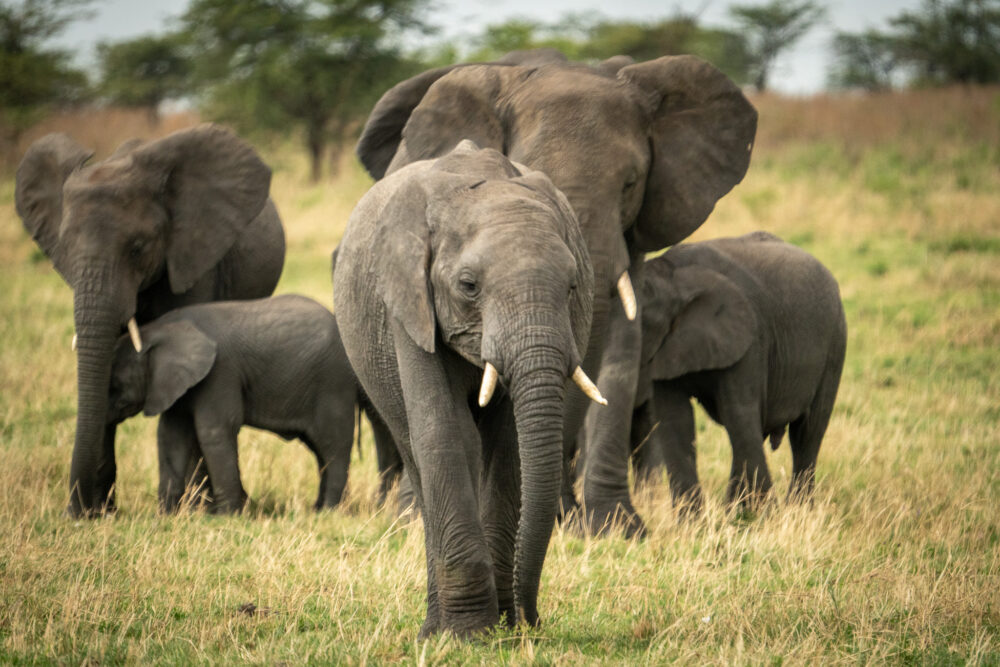
Road Tripping in Tanzania: The Logistics
Before we get into the details of the drive and craft the perfect itinerary, there are a few important things to know before you set foot in Tanzania. Most of this information is for travelers who, like us, are looking to drive the route themselves.
Where to Rent Your Car: Road Trip Africa
We rented a Landcruiser with a double cab and two rooftop pop-tents (for 2 couples/4 people) for $200 per day from Road Trip Africa. Not only was this vehicle in excellent condition, but it was spacious and well-equipped with a full camp kit, including Bradt guidebooks for Tanzania travel.
The kit included 4 camp chairs, 2 tables, a full kitchen set, sleep sets including pillows and sleeping bags, a high lift jack, a quality spare tire, a cook stove, and more. Essentially, everything you need to camp in Tanzania. We even opted for the electric fridge so we could enjoy cold beer around our campfires.
Road Trip Africa is the #1 company for 4×4 car hire in East Africa for good reason. It is more expensive than some alternatives but they will repair and rescue you and give a high-quality kit which we did not receive with other car rental agencies we used in East Africa.
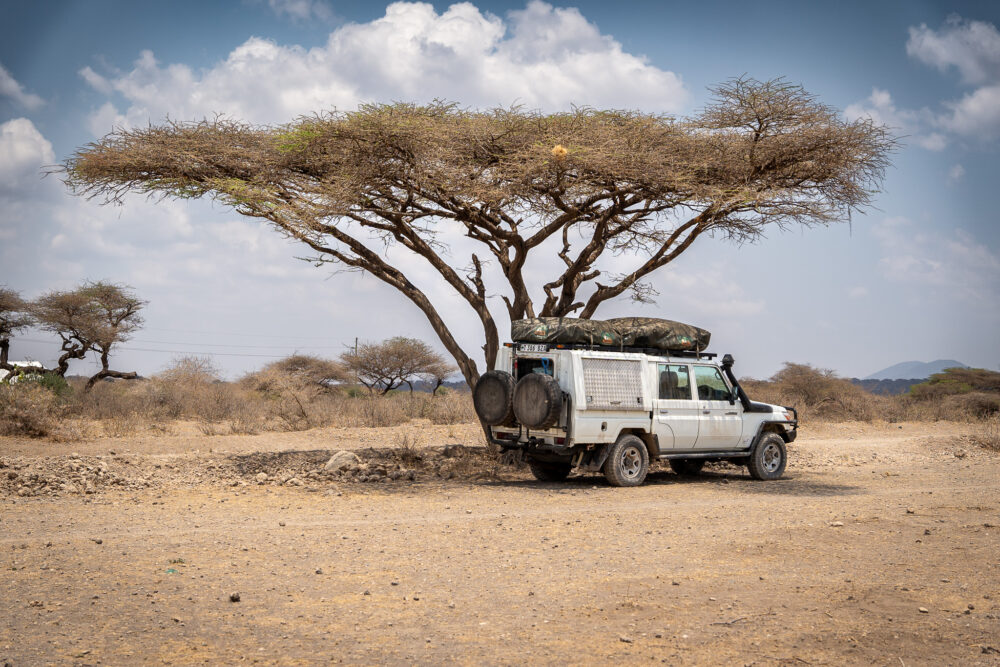
If you’re looking for a more budget-friendly option, you might consider using Active African Vacations. But don’t expect the same quality of vehicle.
Tanzania car rental prices are higher by about 30-50% than Uganda and 25% higher than Kenya. This is because the roads in the Serengeti are rough, and rental companies take into consideration how far you might be from towns if you require a rescue.
Read More: Looking to do an even bigger road trip than this Self Drive Tanzania Itinerary? Here’s my self drive route through ALL of East Africa.
What are the Roads like in Tanzania?
Better than you think.
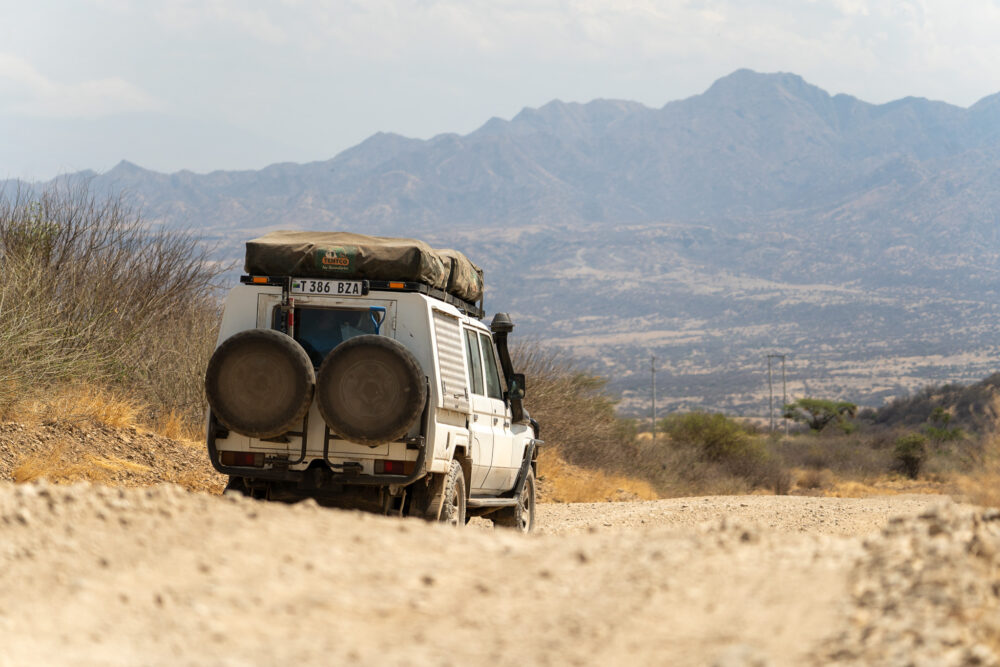
We heard horror stories and were told our car would be rattled into oblivion on the washboard roads of the Serengeti, but honestly, as we traveled in the dry season (which you should), and we didn’t find it too bad. In fact, I would venture to say Tanzania has some of the better roads when compared to Uganda and Kenya.
The general advice is to drive slowly and maintain a steady 50KPH speed over the washboard, and you’ll be fine. Accidents seem only to happen when drivers go faster than the road conditions allow. Take it slow— you are looking for wildlife, after all.
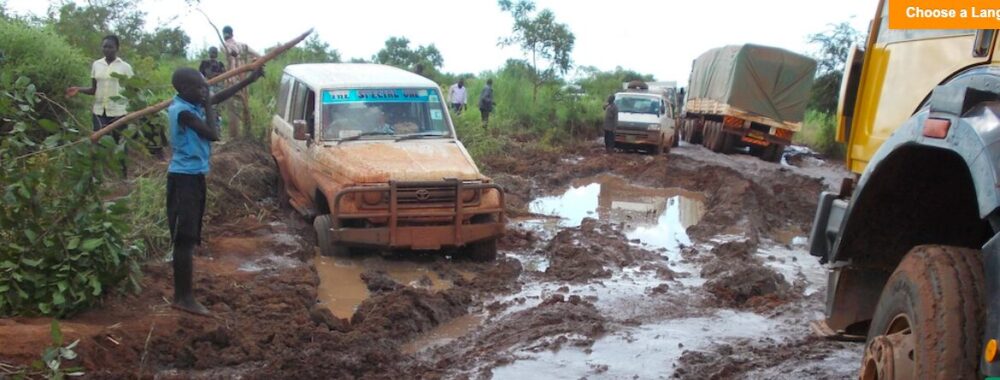
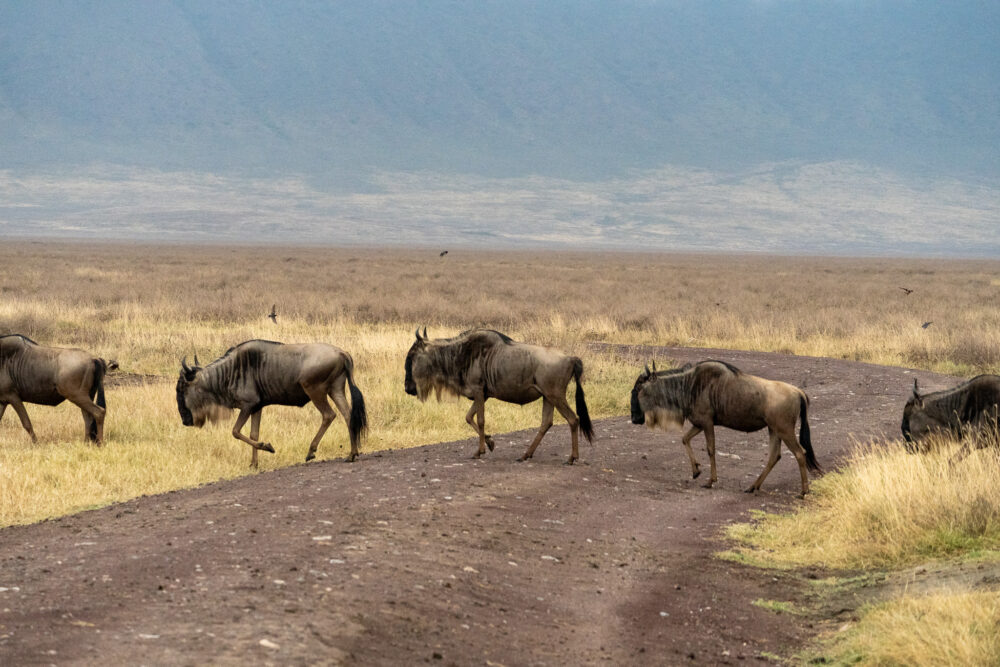
Read More: A self-drive adventure through Uganda.
Do I need Tanzanian Shilling? Or are dollars/credit cards okay?
While you can ONLY pay park fees with a credit card (this is to nip corruption in the bud) — everything else will likely be in TZ Shilling.
We encountered many people on the Internet saying they operated in dollars while in Tanzania, but you get a far better rate in the local currency. The KCB ATMs have no fee to withdraw cash. Just make sure that you withdraw all the cash you need in large cities like Arusha or Dar es Salaam because ATMs don’t exist in small towns and villages. Like NOT AT ALL. Bring all the cash you’ll need.
Is Safety a Concern Road-Tripping in Tanzania?
No more than any other country we’ve visited. We experienced no theft, no bribery, and no issues after spending 5 weeks in the country. We didn’t meet anyone else who had experienced these either.
It is important to understand some basic wildlife behaviors before you go, as you’ll likely be camping in very wildlife-heavy areas. We saw elephants, hippos, and lions in our campsites on multiple occasions. But again, it’s a very low concern and animal attacks are virtually nonexistent among campers.
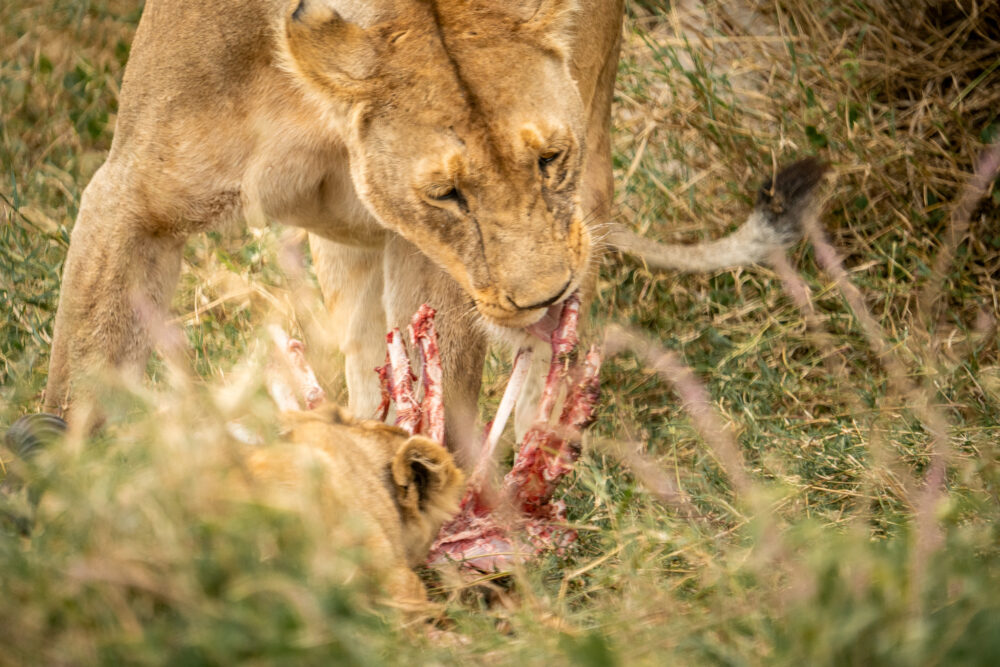
How to Find Campsites in Tanzania?
iOverlander is the best app for finding quality campsites in East Africa. Nothing else even comes close.
My favorite campsites in Tanzania
- Lobo Public Campsite
- Tarangire Public Campsite #1
- Foresight Eco Lodge
- Maji Moto Spring Campsite

Other Quick Tips for Travel in Tanzania
An overview of things you should know when you are independently traveling in Tanzania on safari.
- Best Time of Year to Visit: August to November
- Bolt is a great app for ride-sharing in cities.
- Tanzania has several “conservation areas” that require substantial transit fees. I’ll go over them in the route below, but you must know about them ahead of time so it doesn’t come as a surprise.
- If you’re coming from Kenya or another nearby country with Yellow Fever, you will need your official (not a copy) yellow fever vaccine booklet to enter the country.
- Gas is fairly expensive in Tanzania at about $1.20 per liter in 2025.
- You’ll want to secure your Ngorongoro Permit with your car rental company before you go. The rest of the park tickets you can purchase when you arrive.
- Campsites in Tanzania are nicer than elsewhere in East Africa. You can expect a clean toilet and working shower even when you’re deep in the Serengeti.
- Meals, on the other hand, will almost always have to be cooked yourself! You won’t be camping near lodges like you often are in Uganda and Kenya.
- You need an international license to drive in Tanzania. There will likely be police checkpoints that actually look.
- Some major roads have speed traps. Don’t speed or pass illegally because police are everywhere.
- Here’s a look at the current park entrance prices in Tanzania. Remember it’s also $35 per person to camp in the parks and $20 per day for a private vehicle entrance fee for Landcruisers. $10 per day if you opt for a Nissan Patrol.
- You need to pay for your campsite at the same time you pay for your park ticket. Don’t forget to do so when you enter or you’ll have to go ALL the way back to the main gate to pay.
- Give yourself extra time at the park entrance to pay for the tickets. Like an hour or so. The park’s credit card machines and system are super slow, and it usually took us that long just to secure tickets.
Always remember to stamp in and out of each Tanzania National Park! This means you HAVE to stop at the exit/entrance gates even if you already pre-purchased your tickets. Why? Because anyone who doesn’t stamp out of a TZ national park gets the rangers coming in to look for them! If it turns out you just forgot to stamp out with officials then they will pass the costs of the attempted rescue mission on to you through your car rental company.
So don’t make this very expensive mistake.
Read More: Is a Self-Drive Safari Actually Cheaper?
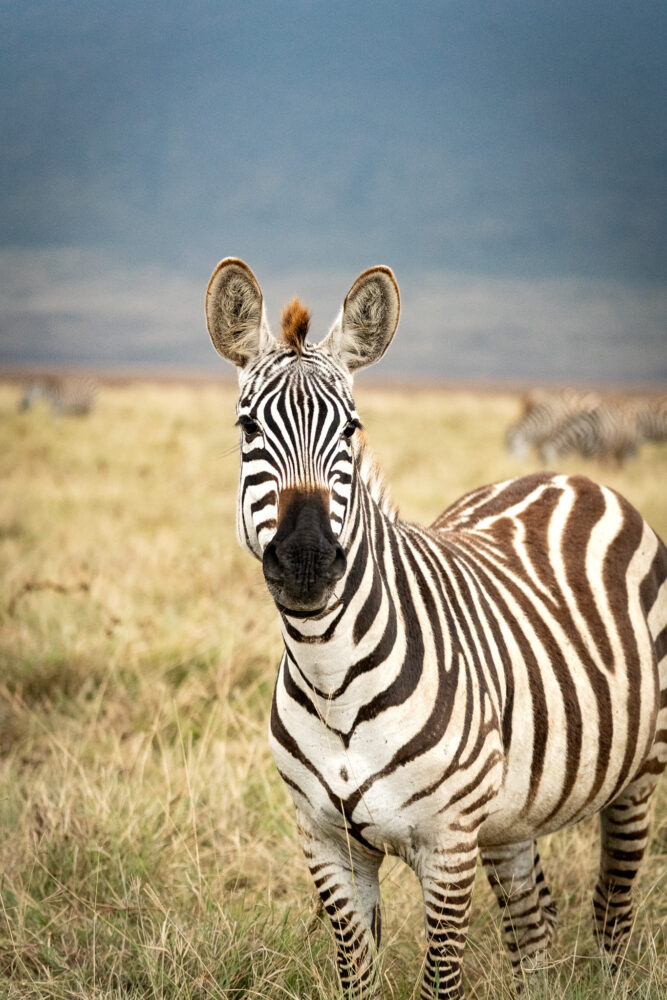
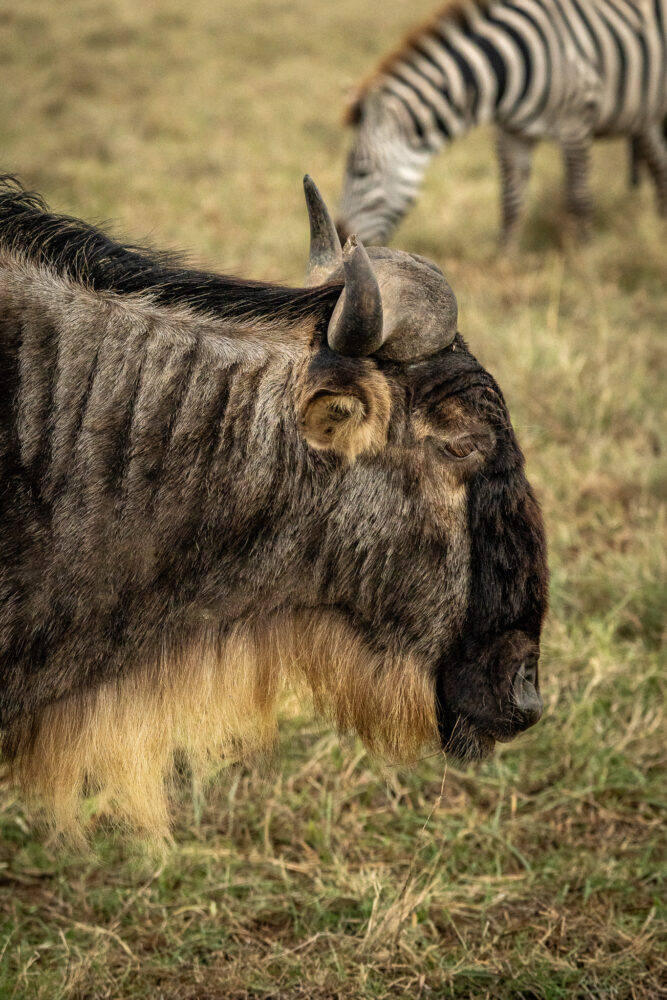
Our Recommended 11-day Self Drive Tanzania Itinerary
This road trip route covers a pathetically small portion of the country. But this well-traveled “Northern Circuit” is where you find all the wildlife. Once you start venturing into the central/south of the country, you’ll find parks and wildlife that are much more spread out. Unless you plan to be in Tanzania for 4+ weeks with a rental car, I would stick to this northern portion.
This Self Drive Tanzania Itinerary does not include the spice islands like Zanzibar or Dar es Salaam, which I feel are best visited without your own vehicle. Or best not visited at all in Zanzibar’s case.
Arrive: Arusha
Neat, orderly, and well-equipped, Arusha is undoubtedly the best home base for beginning and ending your DIY safari. While many travelers find the touts in the city center endlessly annoying, the lavender jacaronda tree canopy and access to both cash and groceries as well as an abundance of restaurants (local + international) make up for it.
Arusha itself is pretty void of attractions, but here’s a quick list of places to grab a bite to eat while you’re planning your route.
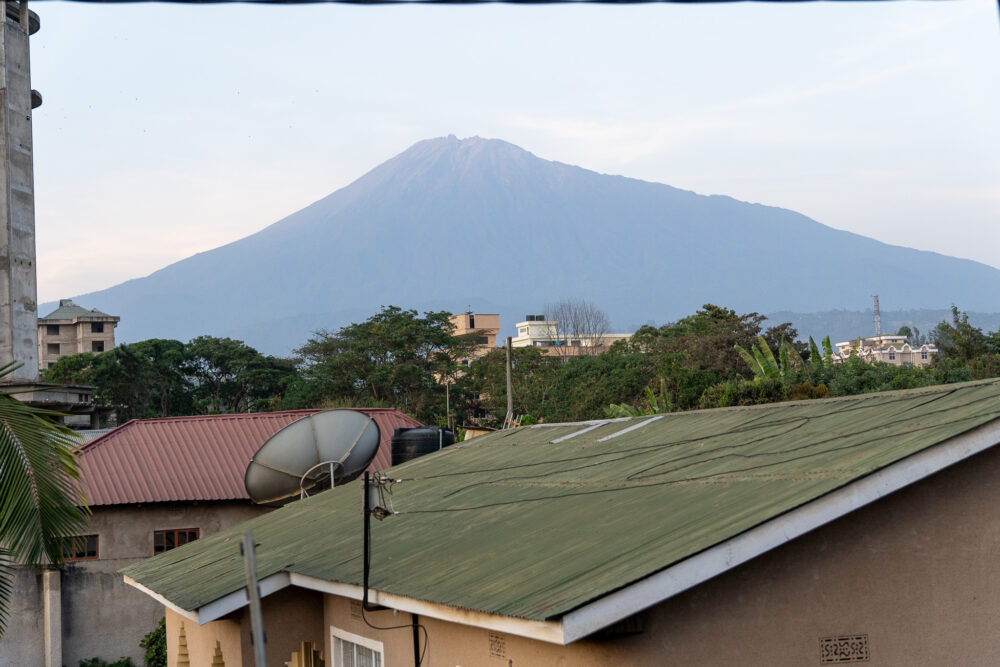
Recommended Eats In Arusha, Tanzania
- Kitamu Coffee. Excellent coffee, free wifi, and surprisingly good local meals.
- Khan’s BBQ. A staple in the local dining scene. If you eat meat, go here at least once.
- George’s Mediterranean. Wine, fresh garlic feta dip, babaganosh, everything here including the Al fresco dining is fantastic. A little on the pricier end, but portions are large enough to share.
- Five Chutneys. Cheap, delicious Indian food. It’s a hole in the wall with the kindest owners.
Stocking up on Groceries: Shoppers Supermarket is the best-stocked store for camping groceries. Admittedly, we are bad at camp meals. We find ourselves too tired to cook anything more exciting than lentils, rice, or some kind of pasta most nights. But once you’re out of Arusha, these items get harder and harder to find. Plan your meals carefully.
Where to Stay: Banana Farm Eco-Hostel
This Maasai-owned and operated budget-friendly stay is by far the best place to stay in the area. It’s on a working banana farm outside the city and offers free walking tours, cow pets, and family-style meals for super cheap. The rooms were comfortable, too! It’s the only place near Arusha where we found a community of travelers to hang out with — but it’s not the young hostel vibe, it was travelers of all backgrounds. The only downside is that it’s quite far out of town, so if you plan to enjoy the food and amenities of Arusha you’ll be taking a lot of Bolts until you have your car.
It’s always booked out so be sure to plan your stay in advance.
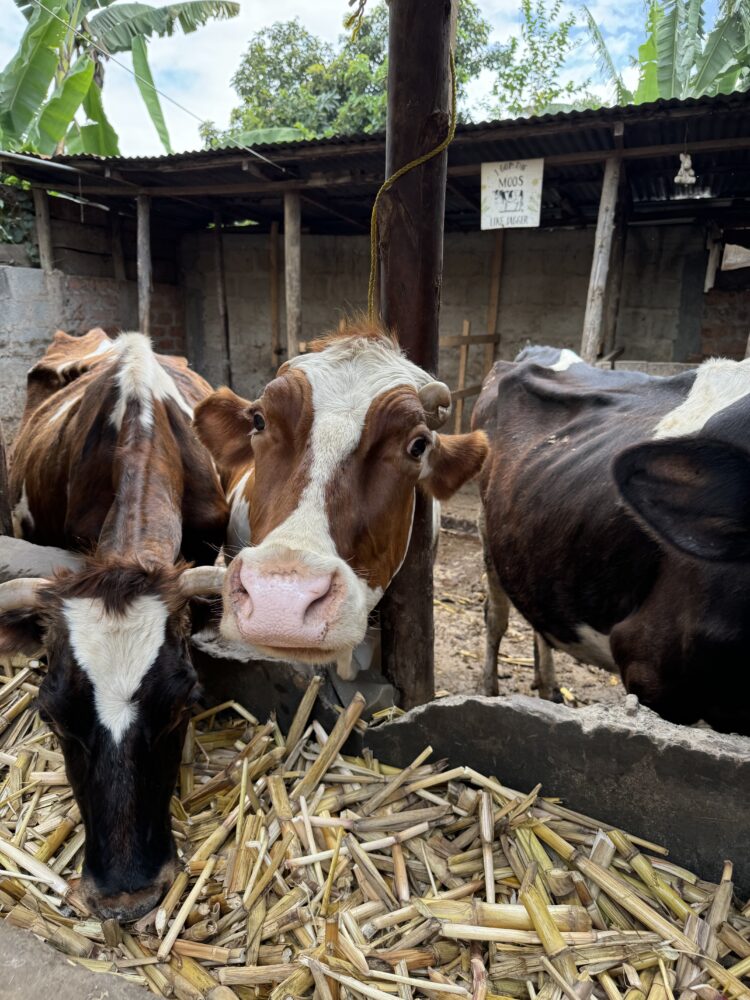
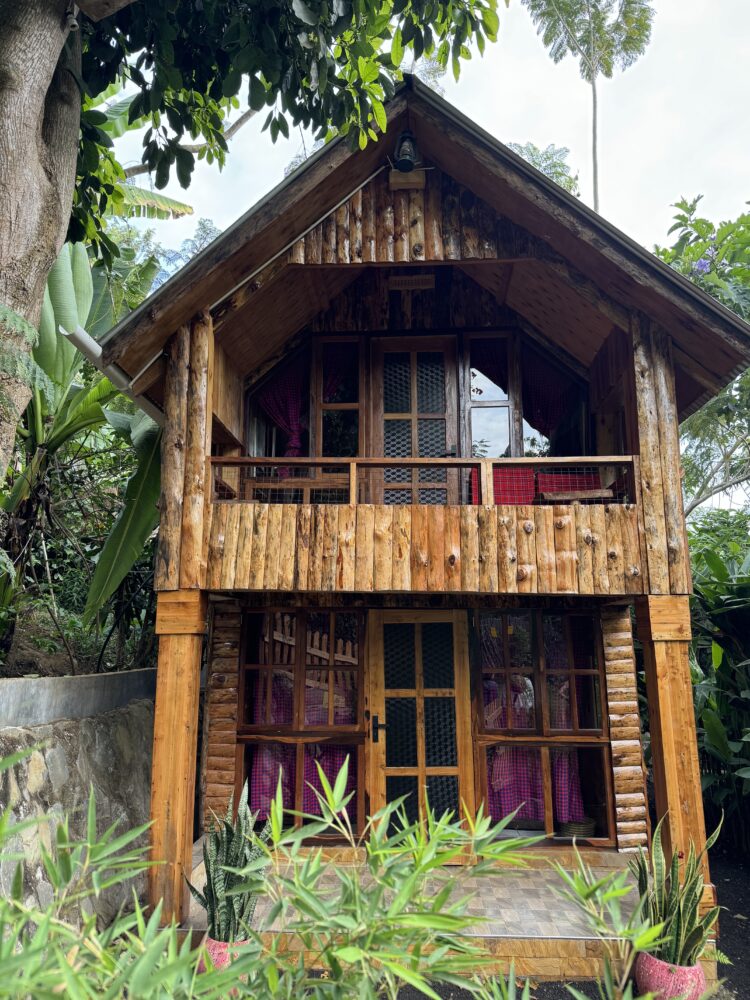

Alternative Where to Stay: Bright Star
This is a super budget-friendly stay very near town with simple but adequate rooms and parking. It’s also near the Road Trip Africa pick-up offices.
Yet Another Alternative Where to Stay: Blue Elephant Villas
This is a local guesthouse that is super comfortable and comes with a giant breakfast and very kind host. It truly feels like you’re living in her home. Definitely recommended for couples looking for a comfortable room near the main part of the city.
You can obviously stay longer in Arusha, but as car rentals are by the day — you’ll probably only want one day (or not even a full one) with the car in the city.
Day One: Arusha to Wild Palm Campsite (Tarangire NP)
Drive 100 km, 2 hours
Today is your first drive day, and it will be an easy one. We picked up the car at 8 AM, went grocery shopping, and hit the road after lunch, and still made it to this campsite with time to spare before sundown.
We paid $8 per person to camp here. Don’t be afraid to negotiate a little. Especially if you are a group of four.
Park Entrance Tips: The reason I recommend camping OUTSIDE the parks on occasion is to maximize your park tickets and save money. Your park ticket is valid for exactly 24 hours after entry, and each overnight stay in the parks is $35 per person.
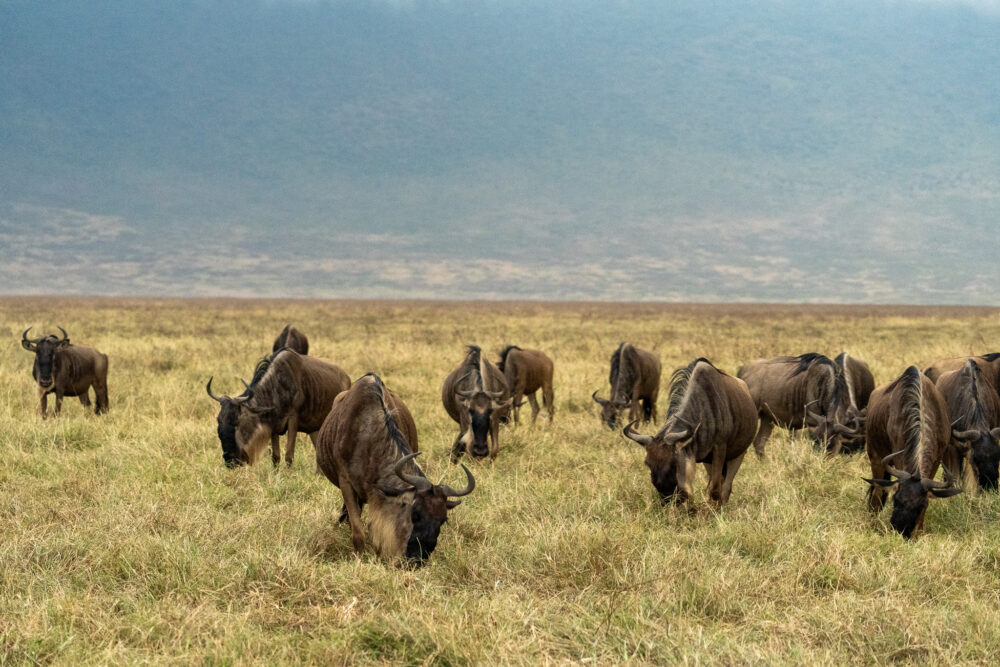
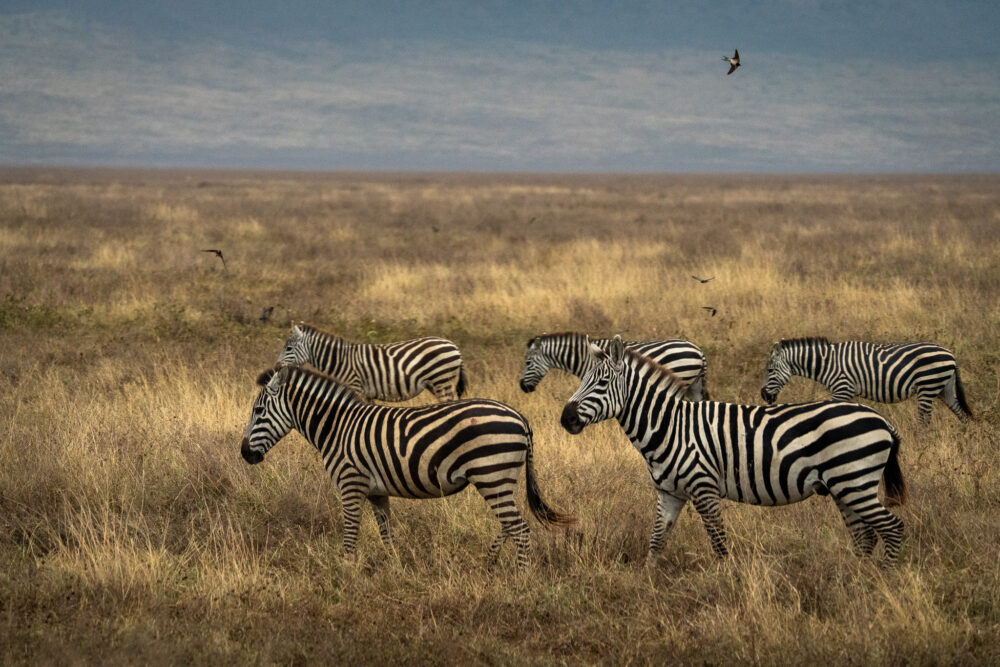
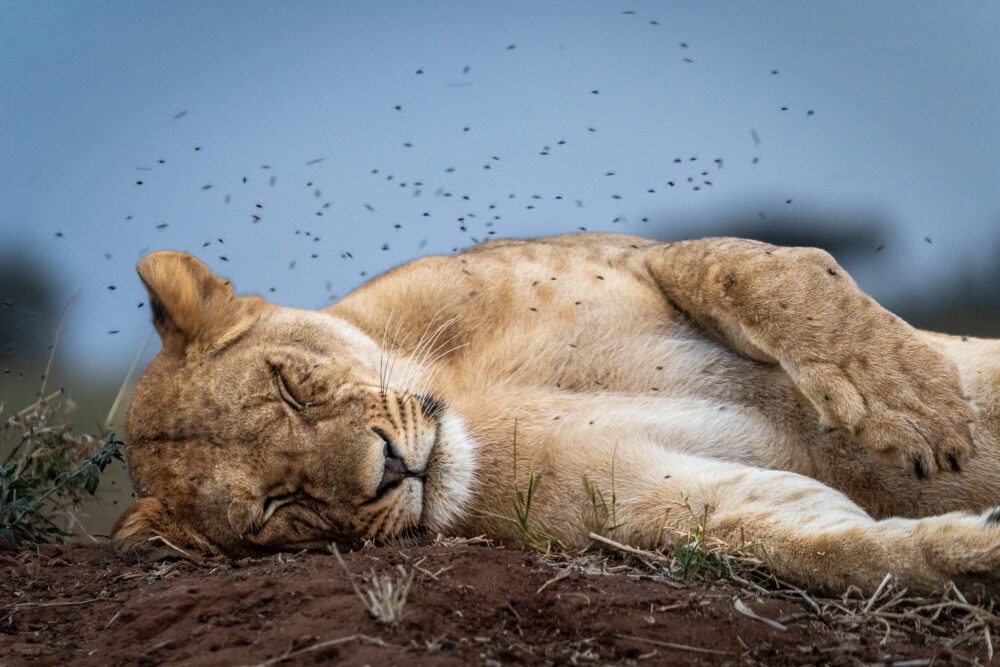
Day Two: Tarangire National Park
For lions, elephants, and stunning Boabab scenery.
The best time to enter Tarangire NP is around 10-11 AM. This ensures you have the evening and the next morning free for game drives. It’s during these times you’ll be most likely to spot wildlife. You can navigate using Maps.me fairly easily in the park. The best routes to drive are highlighted below.
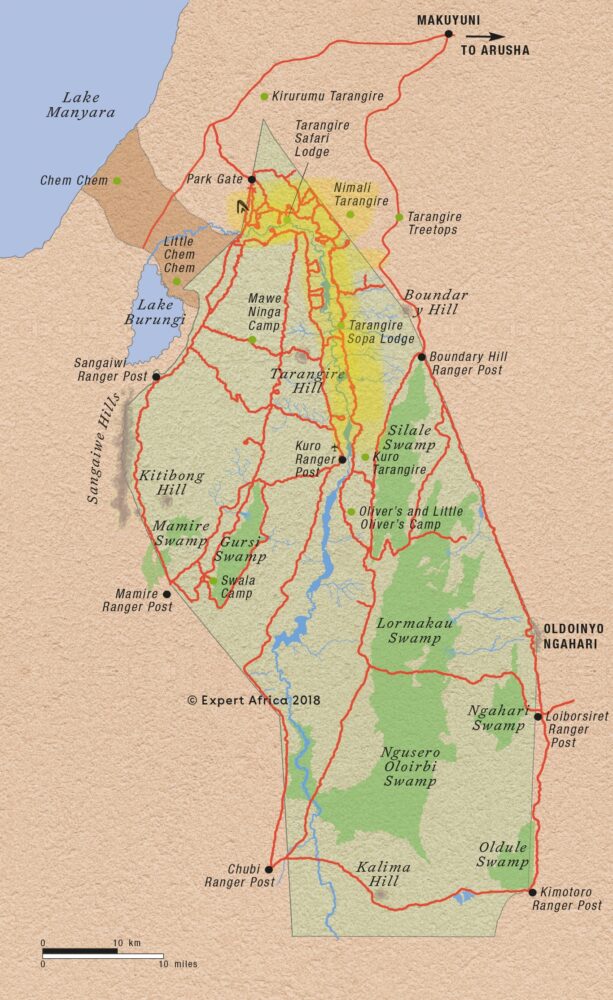
You’ll notice right away on arrival that Tarangire is a zoo of people. But don’t worry, once inside, everyone spreads out, and very few stay longer than a couple of hours as they shuttle tourists to the “main attraction” parks like Serengeti and Ngorongoro.
Night Safari: Tarangire is one of the only parks in Tanzania that allows night safari, but not in your own vehicle. It costs around $100 per person to join one, which is incredibly expensive compared to Uganda or Kenya. If you want a budget-friendly night safari, I recommend Murchison Falls or Queen Elizabeth NP in Uganda.
Where to Stay: Tarangire Public Campsite #1
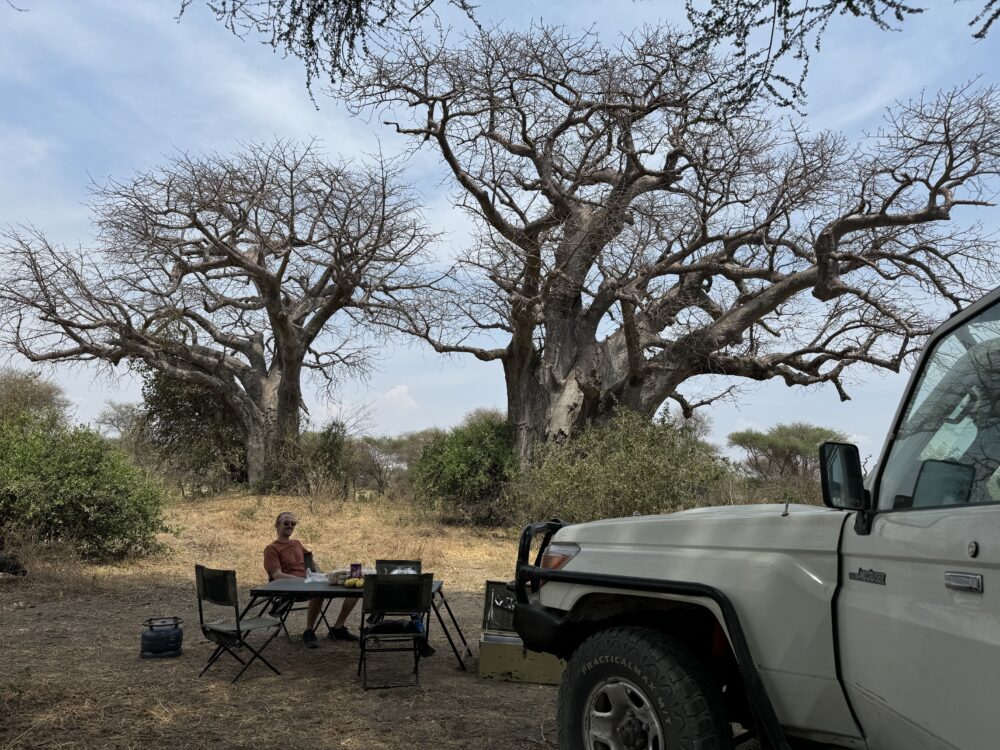
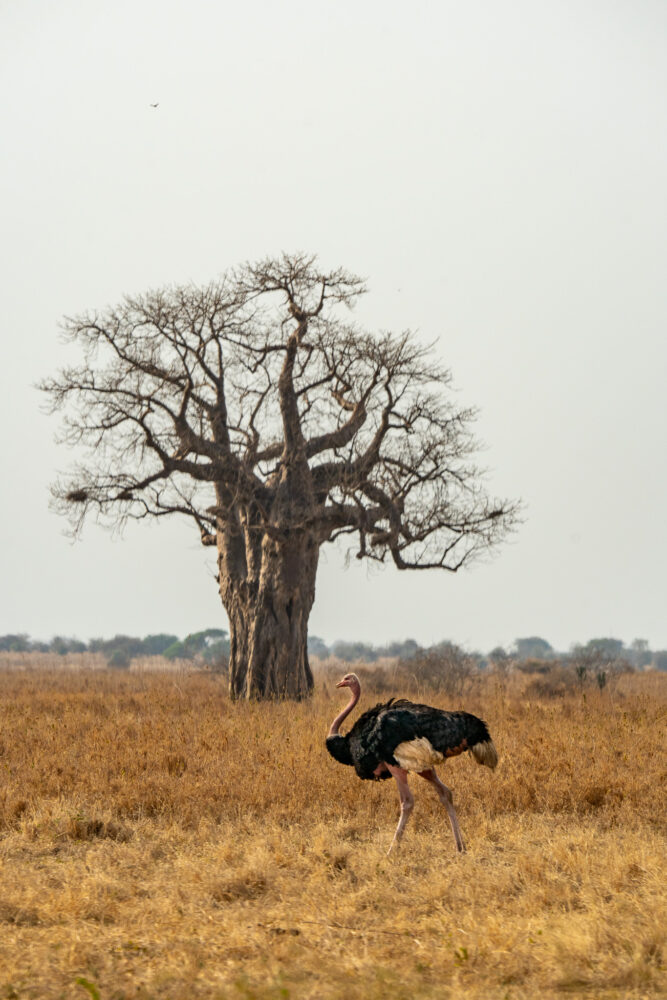
It was here we woke up with elephants in our campsite in the middle of the night. This is one of my favorite places we stayed because it’s super scenic, quiet, and likely to have excellent wildlife encounters after dark due to it’s location within the national park.
Day Three: Tarangire to Lake Eyasi
Drive: 135 km, 2.5 hours
We’re blazing past Lake Manyara. In my opinion, it’s an overrated park and far too crowded for what you’re likely to see. Instead, dip your toes into the diverse tribal cultures of Tanzania with a visit to the Datoga and Hadzabe people who live in Lake Eyasi area.
Cost: $120 per car + includes a local guide to visit both tribes.
This is one of those conservation areas I was talking about above. It costs $120 per car to enter the Lake Eyasi area, paid in cash at the cultural center (which is a checkpoint as you enter the town). From there, you will meet your local guide, who can take you to the tribes in the morning.
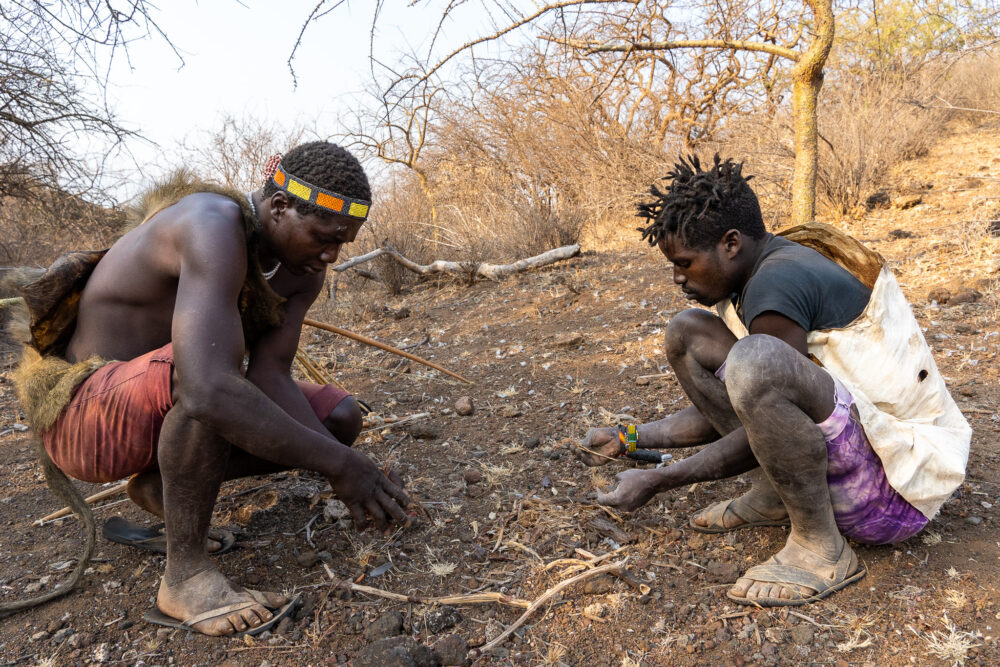
Ethical Tribal Tourism: I think the way tourism is set up here is both authentic and ethical. Your money goes directly to benefit local communities, and you get to peek into their daily life in the least intrusive way possible. There was no welcome crew and staged singing. You just visit with your guide and participate in their morning hunt. You have to be very careful about how + with whom you visit the tribal regions of Africa to avoid exploitative tourism.
Read More: An Ethical Visit to the Karamoja Tribe in Uganda. One of my favorite stops on our Self Drive Tanzania Itinerary.
Where to Stay: Sunset Safari Camp
All locations of campsites can be found on iOverlander and are marked on the Google map below.
Tonight, you can camp near Lake Eyasi Village so you’re poised for an early morning visit to the tribes. Prepare yourself that this is a very buggy region of Tanzania & heavily apply the mosquito spray. We got eaten ALIVE here. It’s also a heavy malaria zone.
Day Four: Tribal Visits to the Ngorongoro Area
Before we head toward the Ngorongoro area, you’ll wake at around 5 AM to meet your guide and join the Hadza for a hunt. This is included in your community entrance fee. Be warned, it’s a hot, fast-paced hike that can exceed 7 miles and you’ll likely witness some serious carnage on cute animals. For our hunt, it was a family of bush babies. But this is how the Hadza subsist. Their entire diet is hunted and foraged. It’s not for the faint of heart, but I feel that it’s an important piece of Tanzanian culture to witness. A look at how all our ancestors lived.
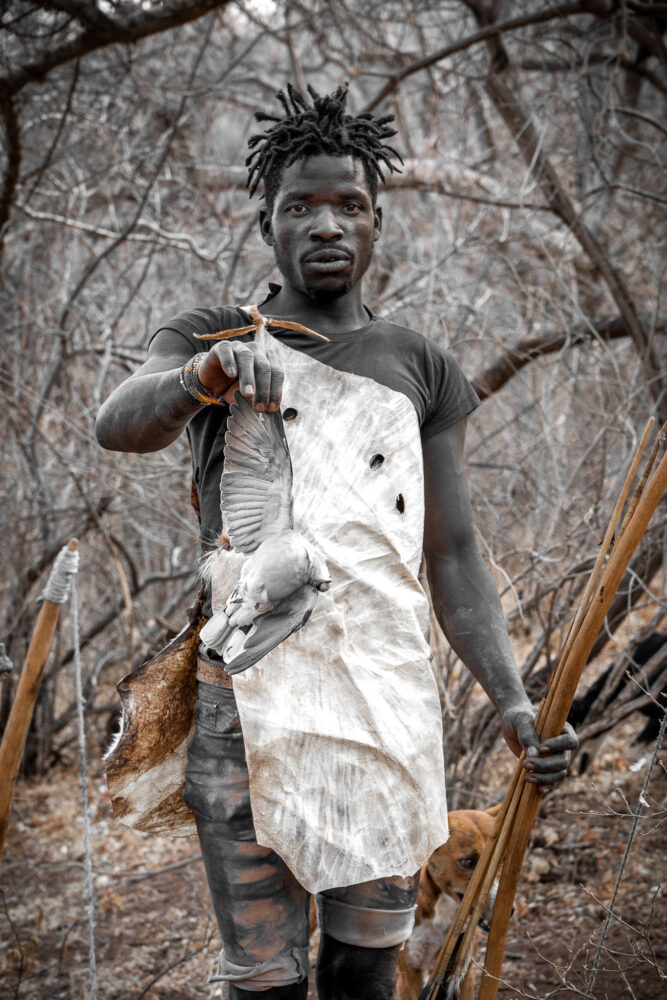
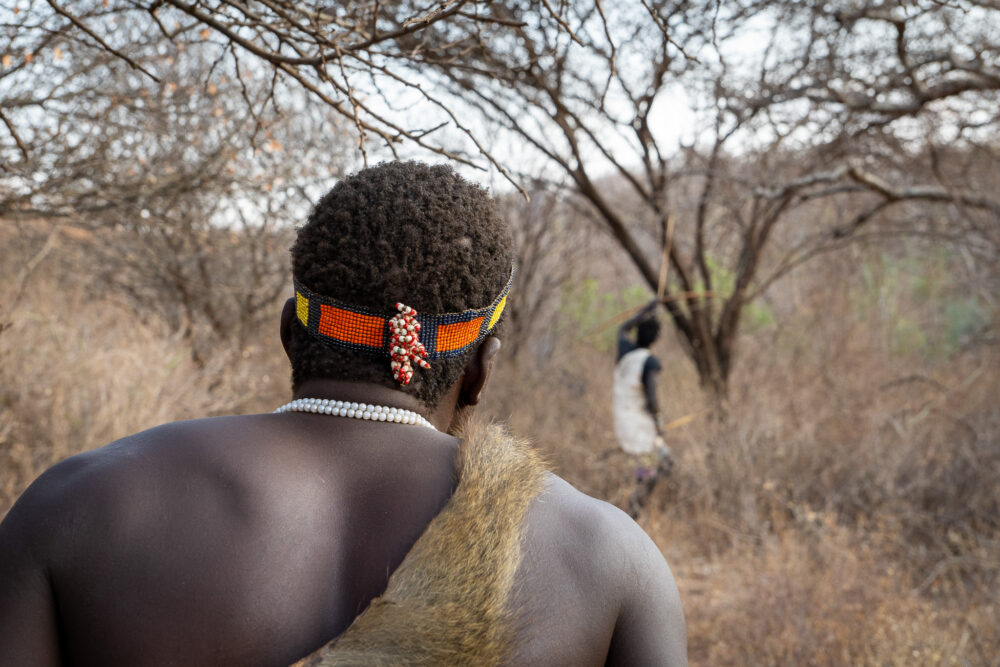
What to Bring: Water, hiking shoes, durable clothes because of thorns, a hat, and if you can, some donations to the community like soap, salt, and any clothing you would be willing to part with. There are lots of kids, and I’m sure they would also appreciate a snack.
After that, you’ll head to the Datoga village and learn about their way of life before hitting the road back toward the Ngorongoro Crater conservation area.
Where to Stay: Foresight Eco Lodge
A collection of locally owned creatively designed cabins with a lovely view— this is a great place to splurge on a good shower and comfy stay. Or you can camp in their grassy campsite for $10 a person. The rooms are $100 a night, including all three meals for two people if you need a day to relax.
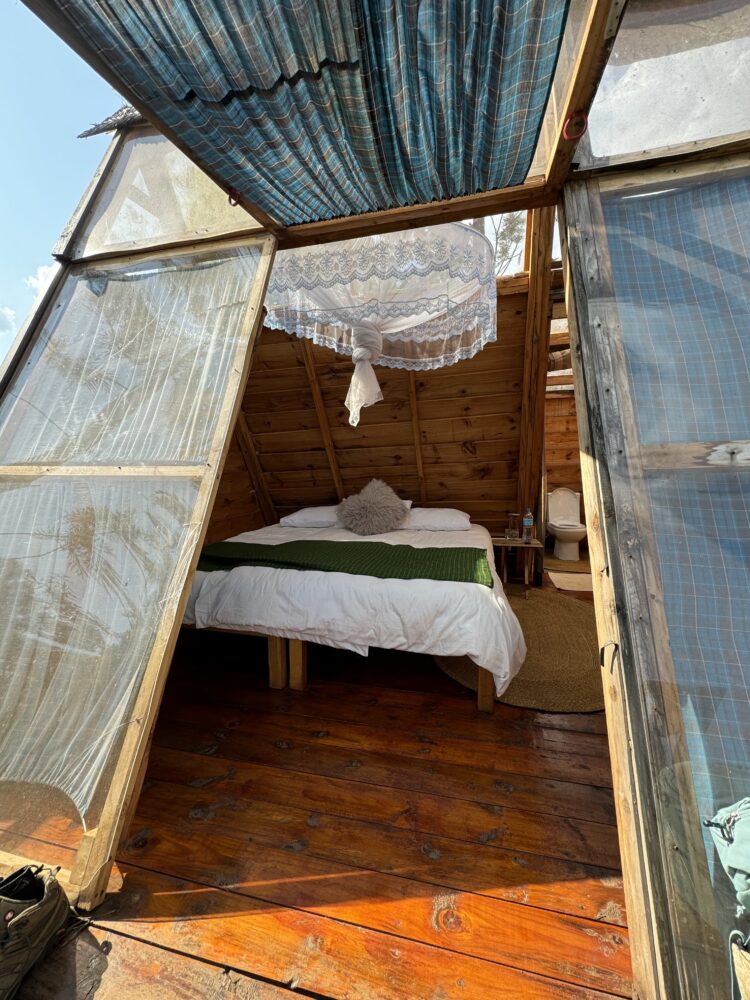
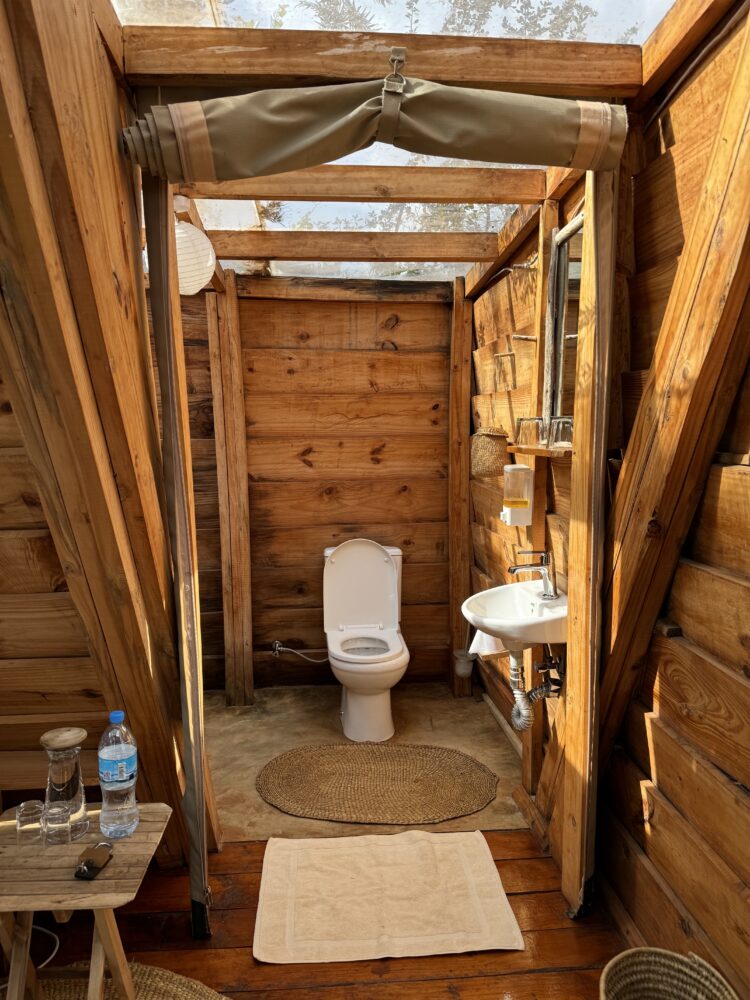
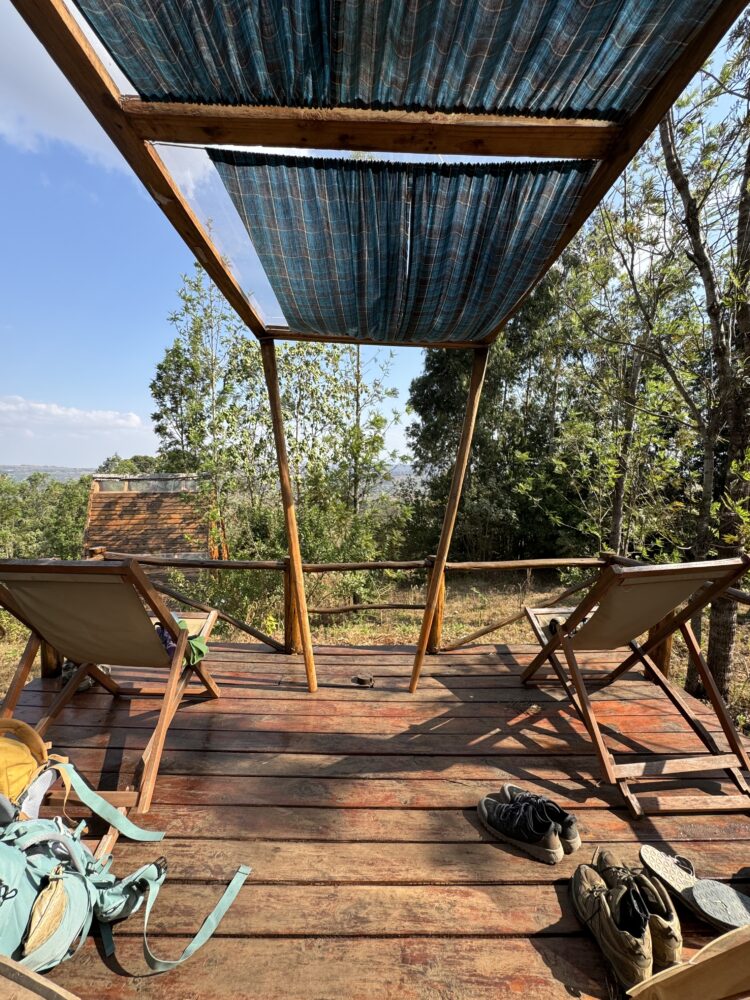
Day Five: Ngorongoro Crater
This is where your timing gets complicated. Ideally, you want to enter the Ngorongoro Conservation Area at 4 PM. This is because you have 24 hours (after entry) to exit Ngorongoro into the Serengeti. And unfortunately, the drive through the Ngorongoro Conservation Area takes about 2 hours from the crater itself. So, in order to take full advantage of your Crater entrance fees, this is the only way that makes sense. Here’s a little map that better explains it.
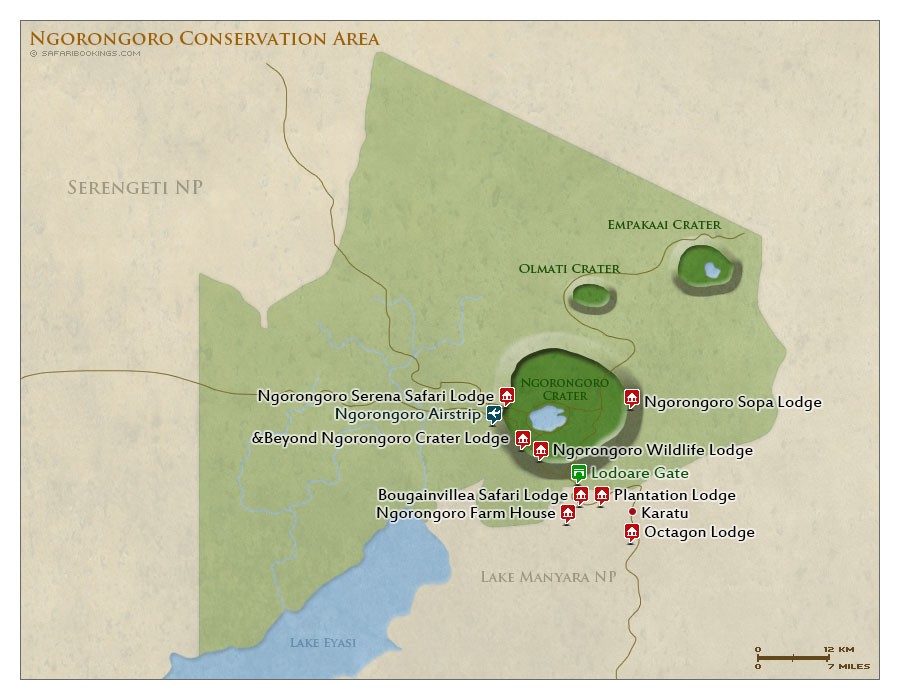
The inner circle is the crater itself, and it costs $295 per car to enter this area. You get 12 hours max (only daylight) with this ticket. The outer circle is the conservation area which costs $70 per person to enter and you get 24 hours total in this whole region.
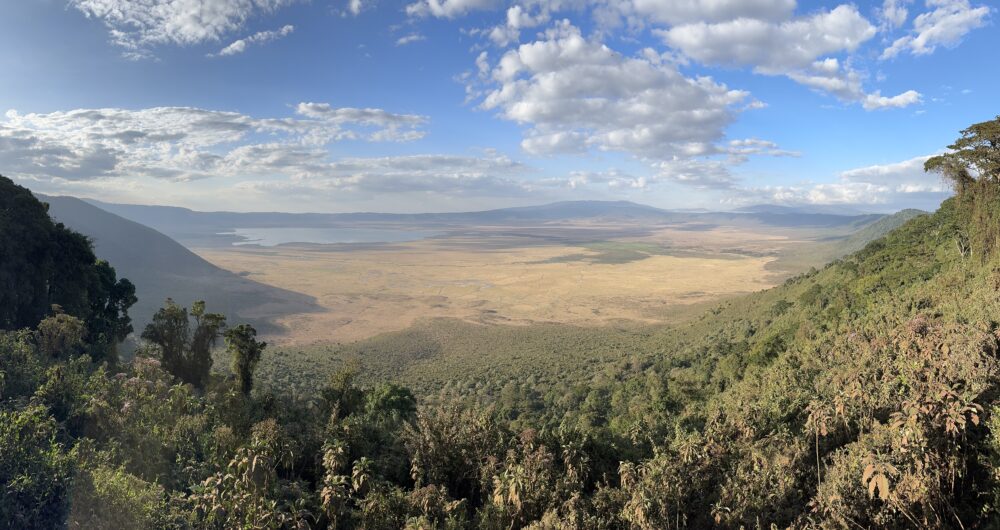
So, in short, your plan of action on this day is to enter the conservation area late in the evening so you can head to a campsite at the crater rim and prepare for an early morning safari into the crater. Pop into the crater viewpoint on your way for a nice view!
Where to Camp: Public Campsite Simba A
This is one of the busiest campsites you’ll stay at in Tanzania. But you’ll be up before all of them and headed to the Ngorongoro Crater descent road well before dawn.
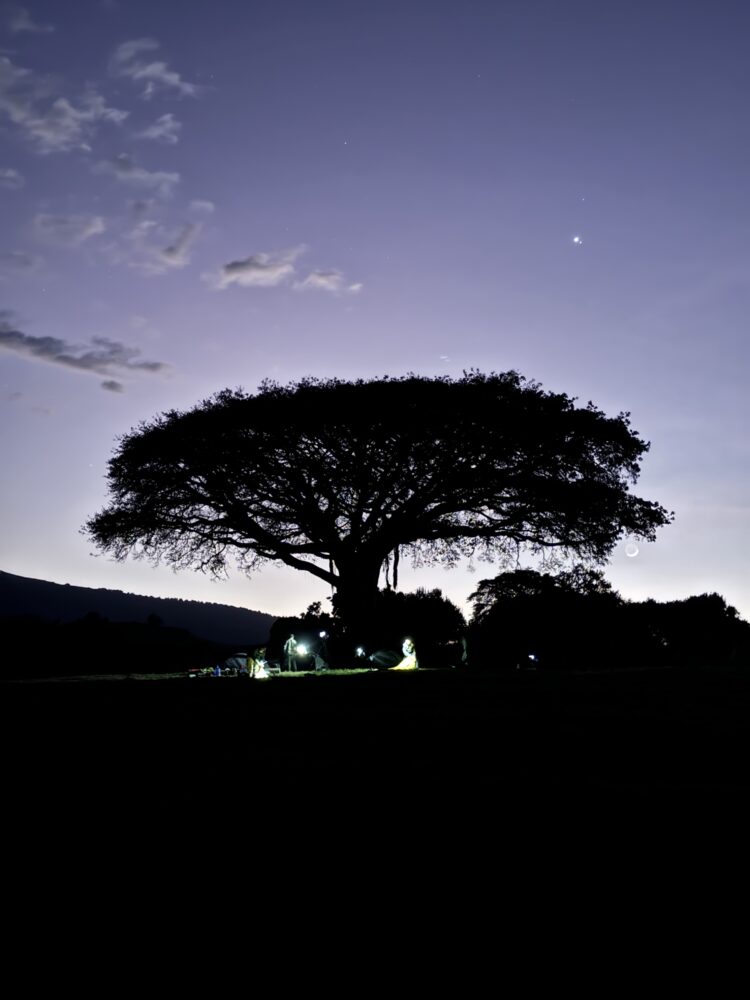
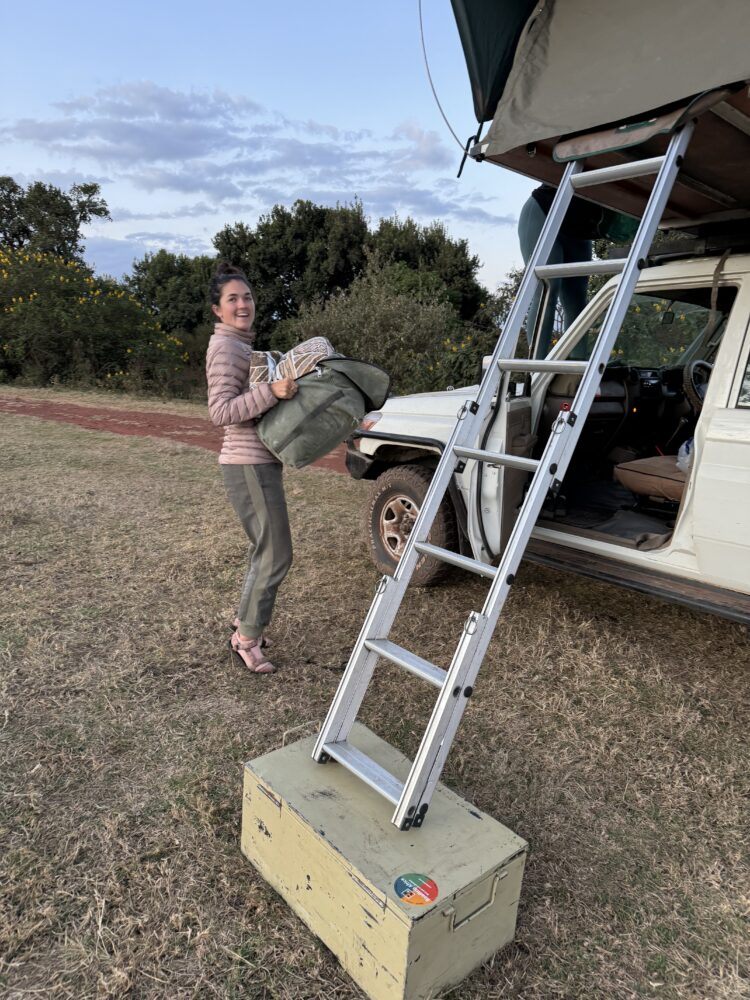
Note on Guides: You do not need a guide to drive in the crater. The park *might* tell you that you do need one, but just tell them you have visited the crater before and you won’t do any off-road driving, and they will allow it. The problem with guides is you won’t be able to head out as early which means missing the wildlife.
Day Six: Ngorongoro Crater + Serengeti (Seronera)
At 5:30 AM you should be packed up and driving along the rim toward the descent road (different from the ascent road) so be sure to check on Maps.me. The road down to the crater opens at first light, which is usually around 6 AM, and you’ll want to be there then.
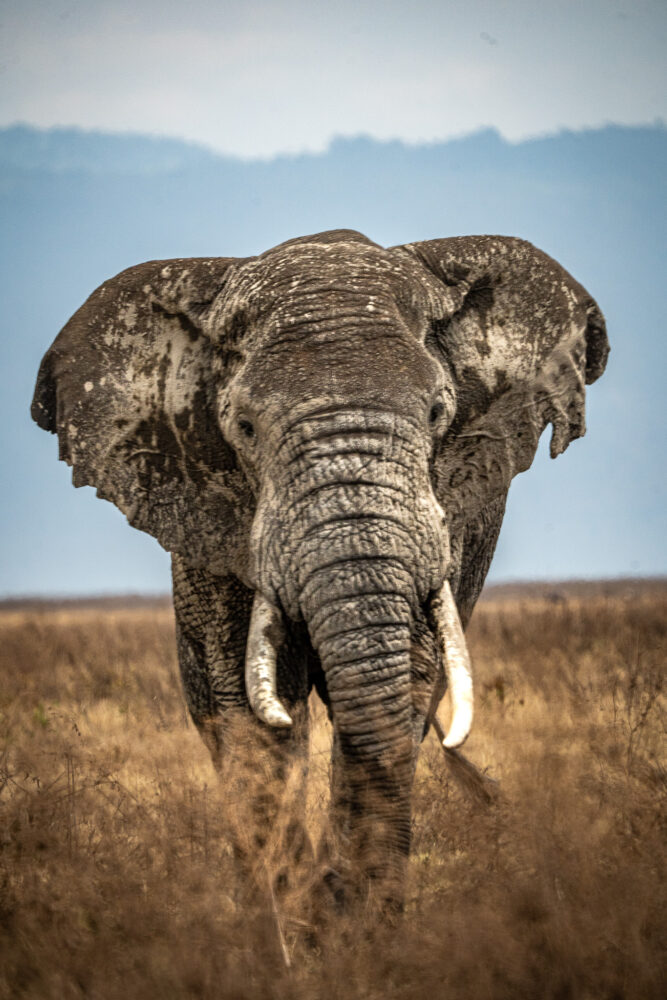
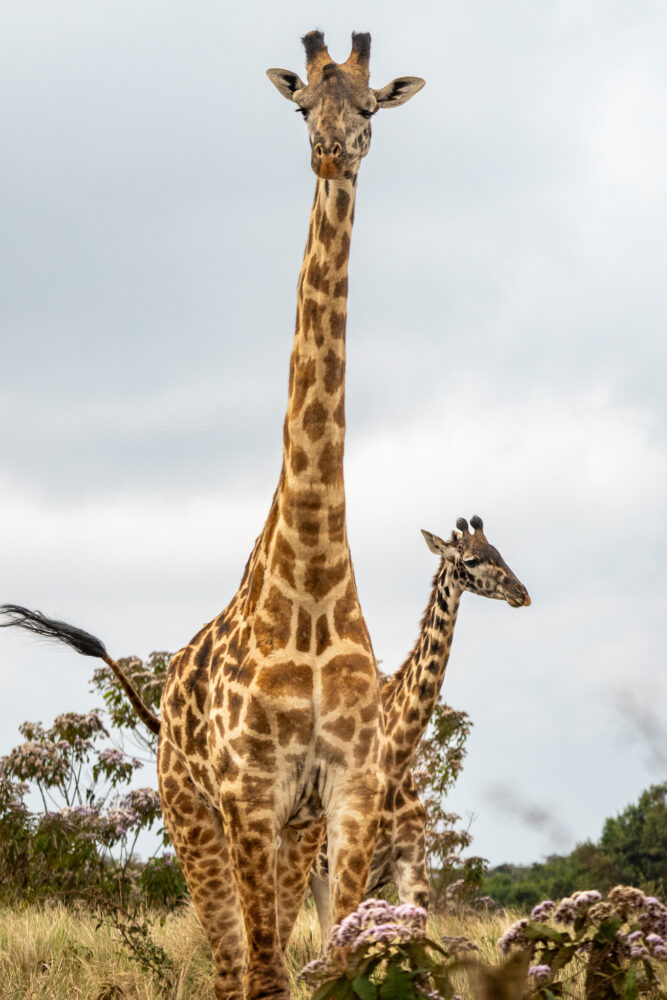
For the next 6-8 hours, you can drive circles all over the crater in search of wildebeest, lions, servals, rhinos, elephants, hyenas, and more.
Then, by 2 PM at the latest, be exiting the crater. It will take you 2 hours from the crater ascent road to reach the exit gate for Ngorongoro (which is also the entrance gate for Serengeti), and you only have until 4 PM, or you’ll be charged a full extra day. Timing is everything in Tanzania parks.
Once you purchase your Serengeti tickets (2 days & 2 campsites) at the gate you can enter the park and drive a small loop for an evening game drive before the sun sets.
Where to Camp: Serenora Camps
All four public camps in this region of Serengeti are about the same regarding crowds and amenities. Again, you’ll probably be arriving around dark and leaving before sun up, so it doesn’t matter too much which you choose.
Day Seven: Serengeti (Lobo)
Welcome to my favorite day and favorite campsite on this whole itinerary. Today, you’ll wake before dawn and explore the vast expanse of the Serengeti.
This is where you’ll want to seek out the big cats like cheetahs and lions.
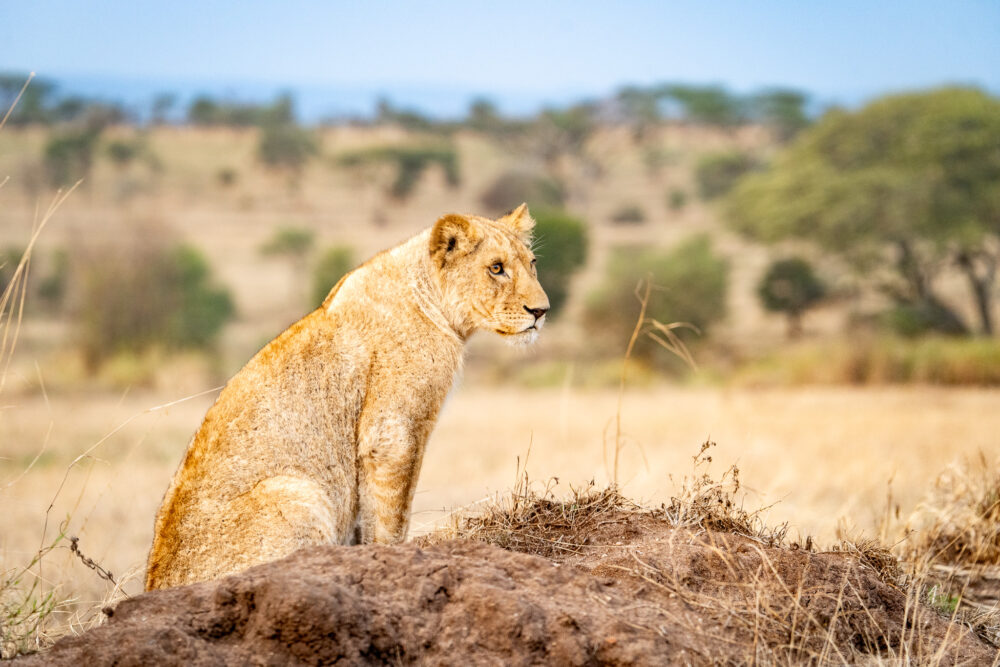
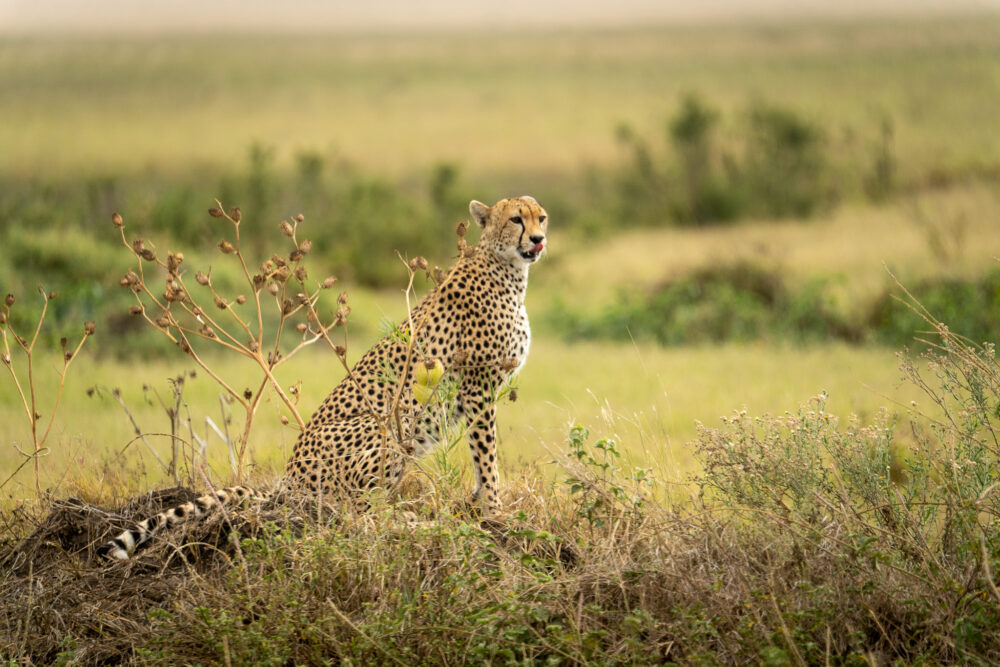
At around 2-3 PM, you’ll want to start making your way to Lobo Public Campsite. It will be wildlife watching the whole 2-hour drive as you enter leopard territory and herds of wildebeest. Lobo is remote and incredibly beautiful. It’s easily my favorite place we camped in all of East Africa. Definitely my favorite on this Self Drive Tanzania Itinerary.
Read More: For a full Serengeti breakdown, read my 3-day guide to visiting the Serengeti.
Where to Camp: Lobo Rest Camp
Learn more about this spectacular and remote campsite in my full guide to the Serengeti. But just know that you absolutely cannot miss this wildlife-packed destination.
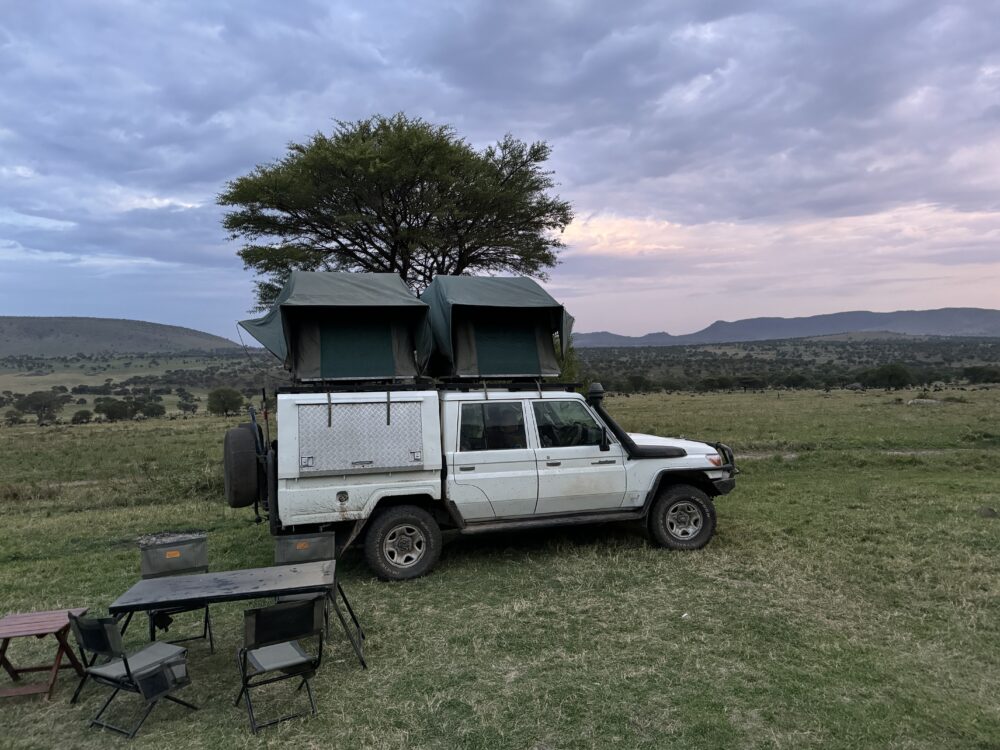

Day Eight: Serengeti to Lake Natron
Drive: ~200 km, 6 hours
Since your park tickets remain valid in the Serengeti until 4 PM, I suggest waking up early and driving to the river crossing where the great migration takes place. This drive takes about 2 hours each way, but you’ll be in the park and on the lookout for wildlife the whole time. If you decide to do this, make sure to add 3 hours to your travel time for the day.
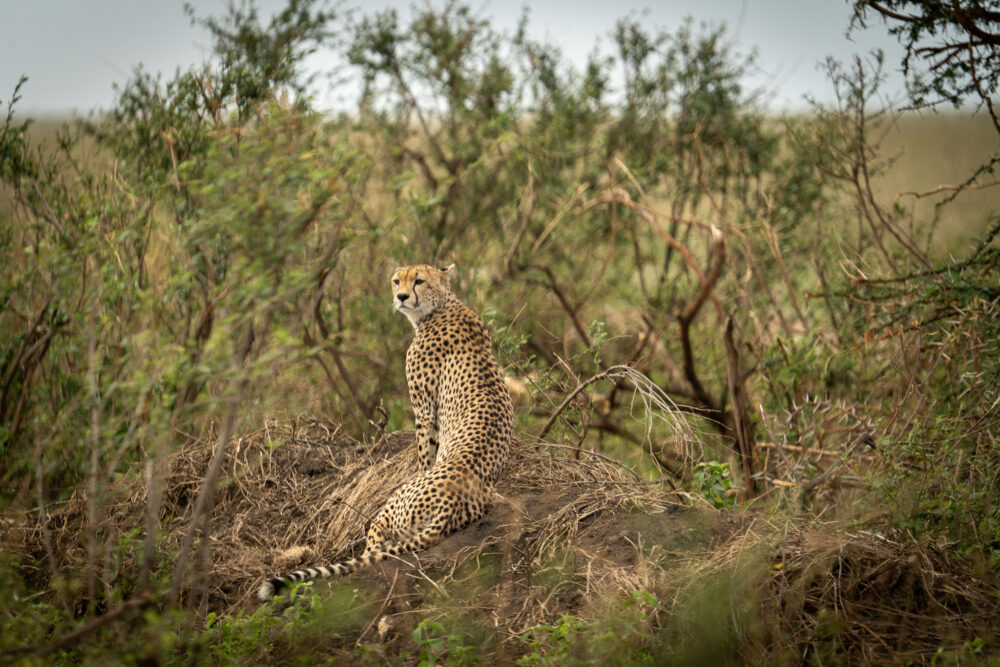
Again, read my Serengeti Guide for more info.
Then, once you exit the park — ideally around 2-3 PM at the latest- you’ll need to cruise these roads to Lake Natron. It will be a mixture of the best and worst roads of the trip, but just take it as it comes. This will put you coasting into the Lake Natron area at around sundown.
Warning! This is a surprise conservation area to many. While Lake Natron itself is only $11 per person to visit, you have to pay $23 to stay overnight in the area, $20 to enter the Natron conservation area at all and $30 in local community toll fees. This is per person. There is an official roadblock where you pay the fees (the gov ones must be paid by card, but the community can be cash). The only alternative to paying these fees would be going BACK through the Ngorongoro Conservation area, however, which costs $70 per person anyway. You might as well get some nice scenery and new experiences from your money.
Where to camp: Maasai Giraffe Rest
This is a very comfortable camp/lodge with a pool and oasis in the middle of the desert. We paid $15 per person to camp here. In the morning, we drove ourselves to the Flamingo Lake (lake Natron) and the oldest human footprints ever discovered and took in the scenery.
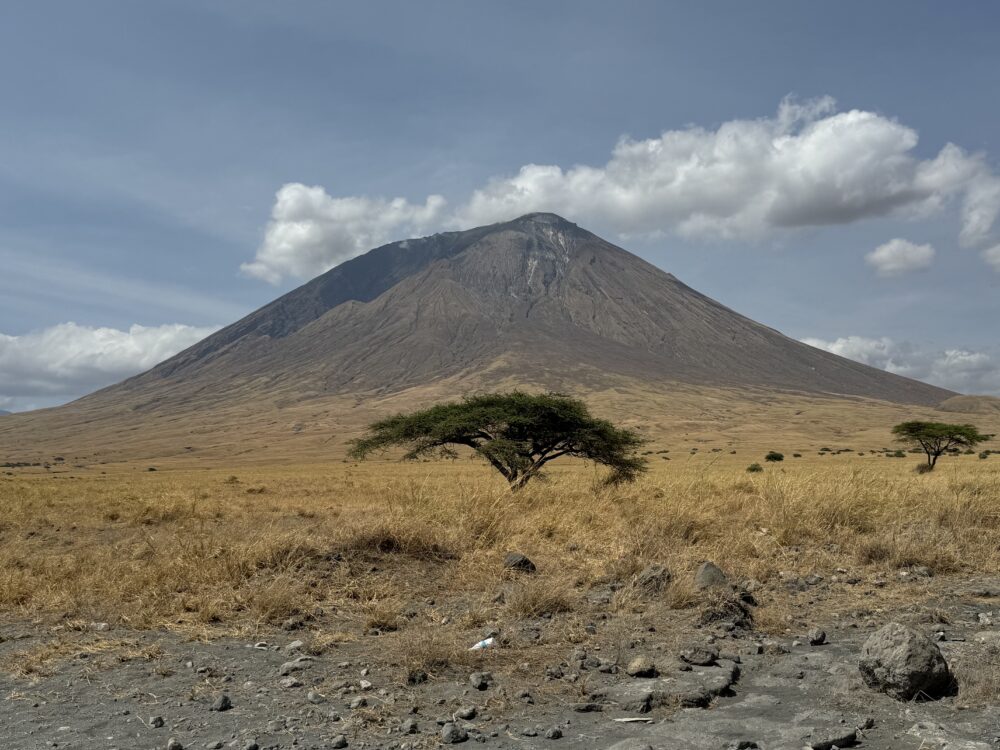
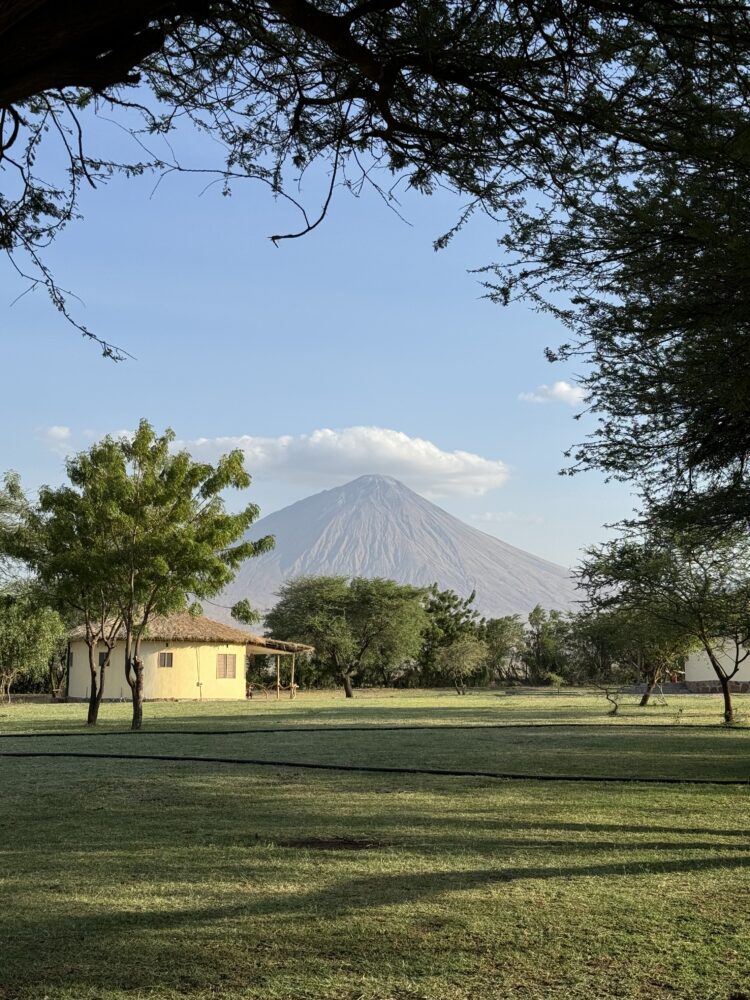
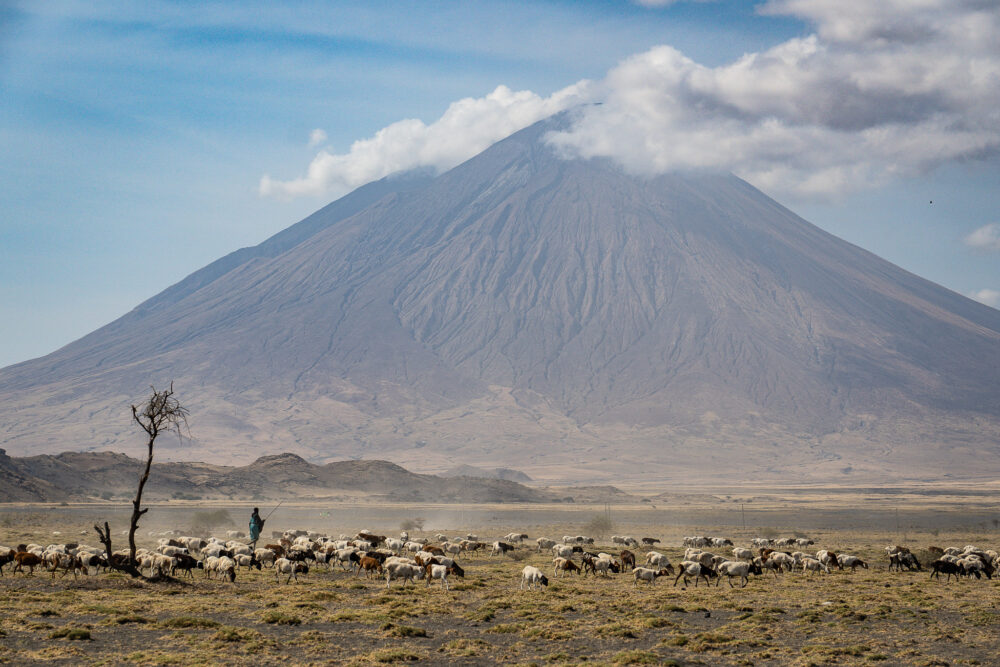
If you want to stay for longer, you can also elect to climb to the summit of the impressive Ol Doinyo Lengai or visit the Ngaresero waterfalls, but it all comes at a very regulated (and overpriced imo) fee.
The volcano is very special to the Masai people as they believe their god resides inside and the name in their local language even means “mountain of god.” It’s $100 to climb it. Personally, I just liked the dramatic backdrop it created for this whole area.
Day Nine: Lake Natron to Kilimanjaro Area
Drive: ~200 km, 5 hours
After a slow morning spent savoring camp and enjoying the views of the lake, hit the road for another long drive day. This is where you’ll run into that roadblock I mentioned before and be forced to pay the Lake Natron fees.
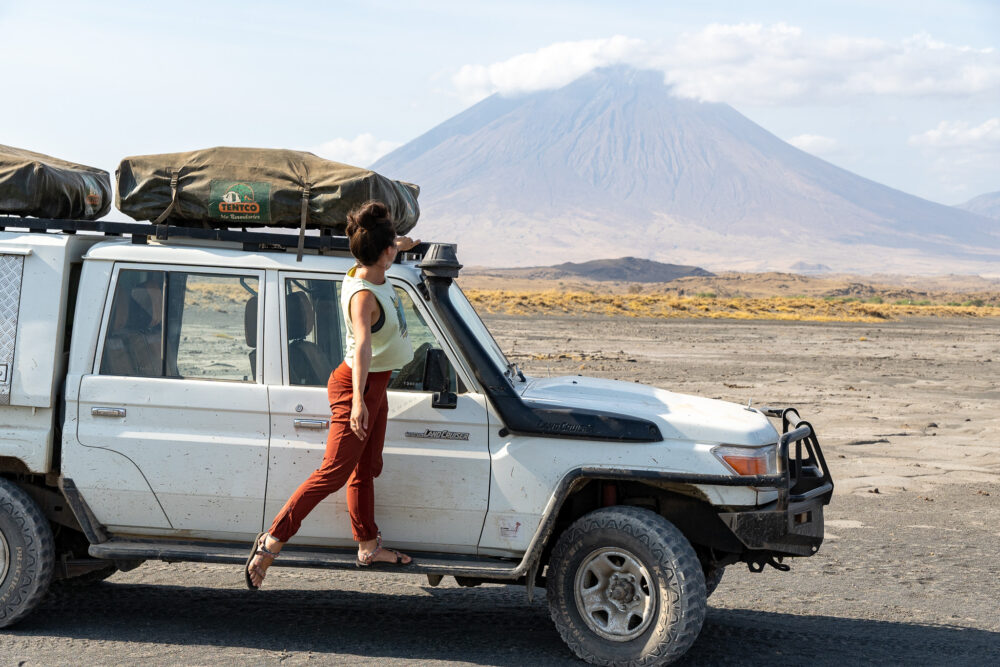
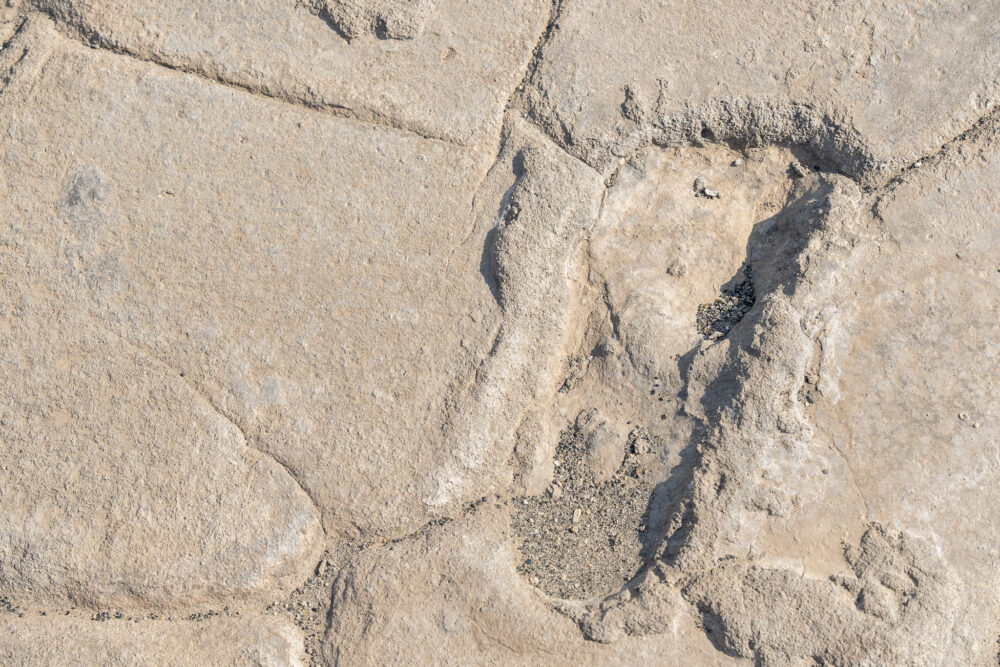
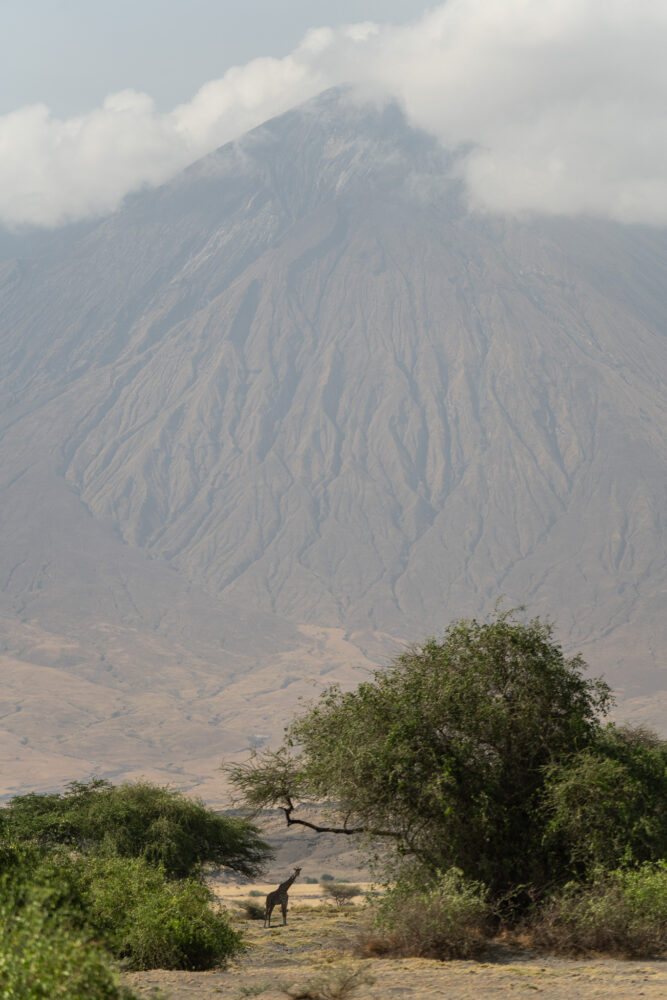
Today, there isn’t much to do or see— just a full day driving on dusty back roads toward Africa’s tallest mountain. Depending on which area of the Kilimanjaro region you would like to visit on this Self Drive Tanzania Itinerary, there are two places you could comfortably stay.
Where to Stay: Simba Farm (Matadi)
This sprawling farm in Matadi near the base of Kilimanjaro has a large camping area and multiple guesthouse rooms if you’re looking for a proper shower. Rooms do cost around $120 a night, but camping is $10. They offer delicious home-cooked meals, comfortable hang-out areas, and a nice pool.
Where to Stay: Tulivu Kilimanjaro Retreat (Moshi)
This is a huge grassy enclosed camping area with well-tended gardens, a huge outdoor kitchen, and really luxurious rooms with private pools if you want to go that route. After a long 10 days of roughing it, this was a welcome place to relax and unwind. Of all the campsites on our Self Drive Tanzania Itinerary, this one has the most luxurious amenities.
Day 10: Chemka Hot Springs
A turquoise oasis rimmed by fluffy palms that, on a clear day, has direct views of Mt. Kilimanjaro. Traversing through small desert communities and dirt roads with chameleon crossings, this small natural hot spring emerges seemingly out of nowhere. During the daytime hours, the spring is busy with local tourists from nearby Moshi or Arusha. But camping here allows you to swim in the evening and early morning hours and have the pools all to yourself.
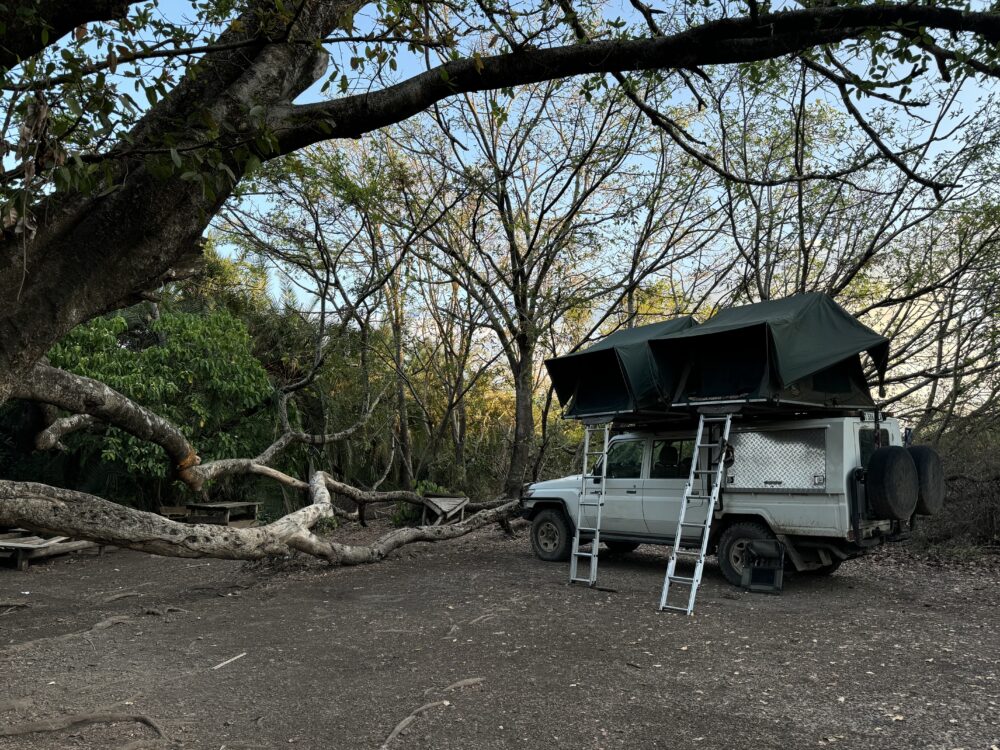
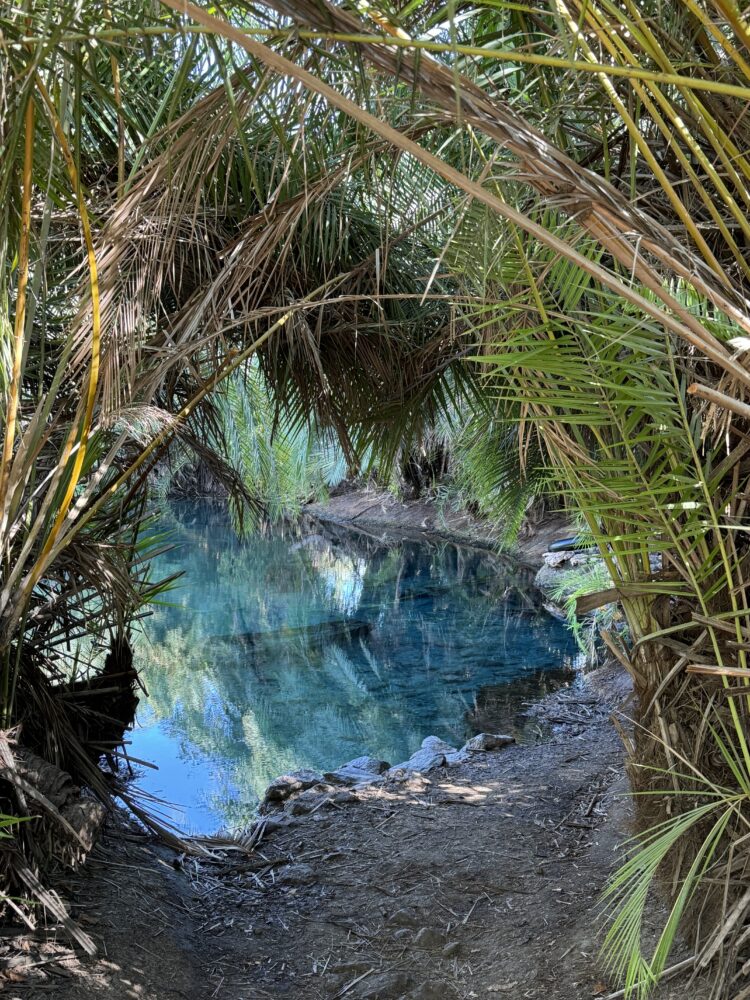
Be warned that the rules around payment, like most other places in Tanzania, are both strict and confusing. But here’s the lowdown.
- A daytime visit costs 10,000 shillings per person or about $4.
- The camping fee is 20,000 shillings per person ($8) + 20,000 shillings for the local guard per party. This includes the use of the pools.
- If you use a drone, they will charge you more money.
- If you use the black inflatable tubes strewn haphazardly about and unattended, you will be charged more money.
Now, if you’re like us and have no interest in visiting the pools when they are crowded with people…arrive later in the afternoon and hang out at the beer shop and restaurant across the way from the springs until they “close” for the day. Then you can pay for the camping and enjoy the springs from 6 PM (the time you can enter) until sundown and again in the morning from sun up to about 8 AM.
Where to Stay: Maji Moto Spring Campsite
The campsite is directly next to the hot springs within the lovely twisted tree trunks. There is also a toilet facility being built that should be completed any day now.
Day Eleven: Arusha
Drive: 90 km, 2 hours
The road back to Arusha is paved and easy the whole way. I recommend returning the car to Road Trip Africa (or whoever) you rented from today. This will complete the northern circuit of Tanzania.
Tanzania Road Trip Map
You’ll notice that only part of the driving directions are input here. This is because you want to drive in essentially a straight line east from Klein’s Gate in the Serengeti to Lake Natron and then again directly east to Kilimanjaro. But, Google insists that is not a possible route. Even on walking directions. This is why you’ll need to use either a paper map or Maps.me to navigate in the region.
Cost of This Self Drive Tanzania Itinerary
Wondering what a trip like this costs? Well, I can tell you exactly what we spent! This many vary a little depending on your level of comfort with camping and how luxurious you want your camp meals to be. Keep in mind these are the expenses we paid for a trip for two people.
- National Park Fees as detailed above: $1,225
- Car Rental Fees: $1,600-$2,200 depending on company
- Gas: $300
- Camping: $180
- Groceries: $110
- Sim Card: $23
- Lake Natron Conservation Fees: $120
- Lake Eyasi + Hadzabe Hunt: $120
Total: $4,078 for two people and 11 days.
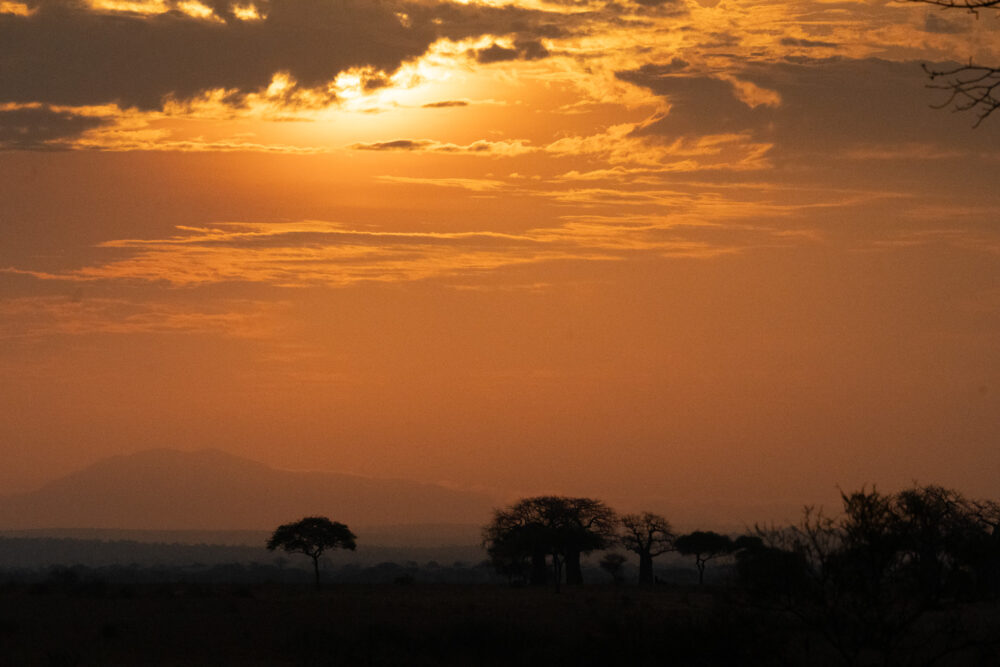
This is pretty pricy. I know that. In fact, East Africa was the most expensive travel destination we’ve ever visited. But there simply isn’t a more budget-friendly option when it comes to SAFARI in East Africa. You’ll be hard-pressed to find an itinerary that encompasses all these destinations for less than $2,000 per person. If you DO find one, drop it in the comments of this blog post!
Read More: For a full breakdown of self-drive safari costs.
Planning an East African safari had been on my radar for decades. But I could never find the right group trip or guided tour. That’s how this Self Drive Tanzania Itinerary was born. I knew exactly what destinations had to be on my itinerary and the easiest way to make that happen was to do it myself! And it turned out to be far easier than I had anticipated! I hope this 11-day self-drive itinerary helps you explore my favorite wildlife destination in East Africa.
Save This Self Drive Tanzania Itinerary For Later!
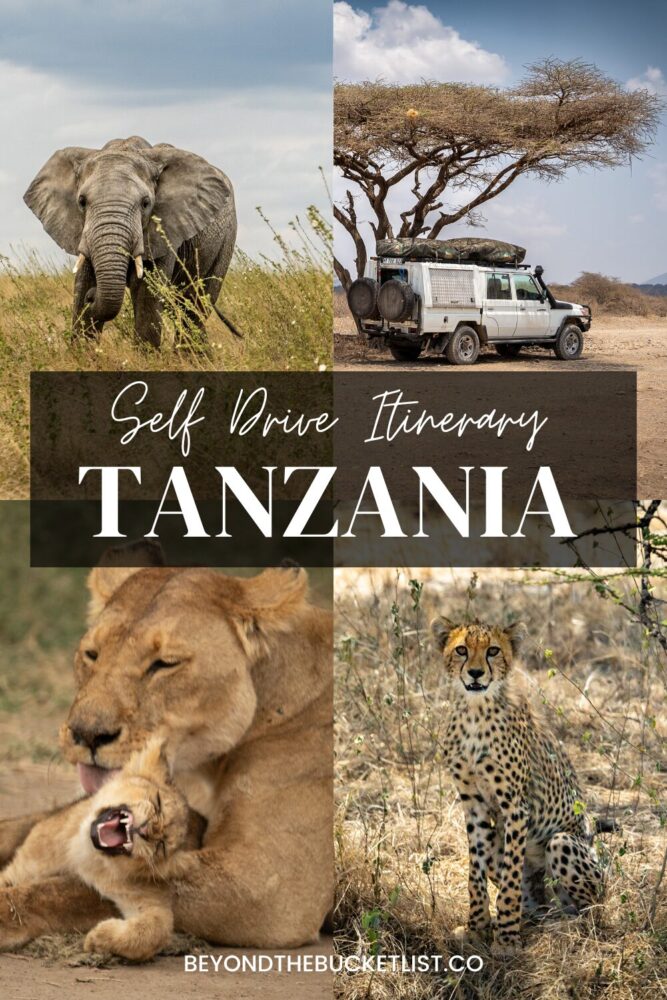
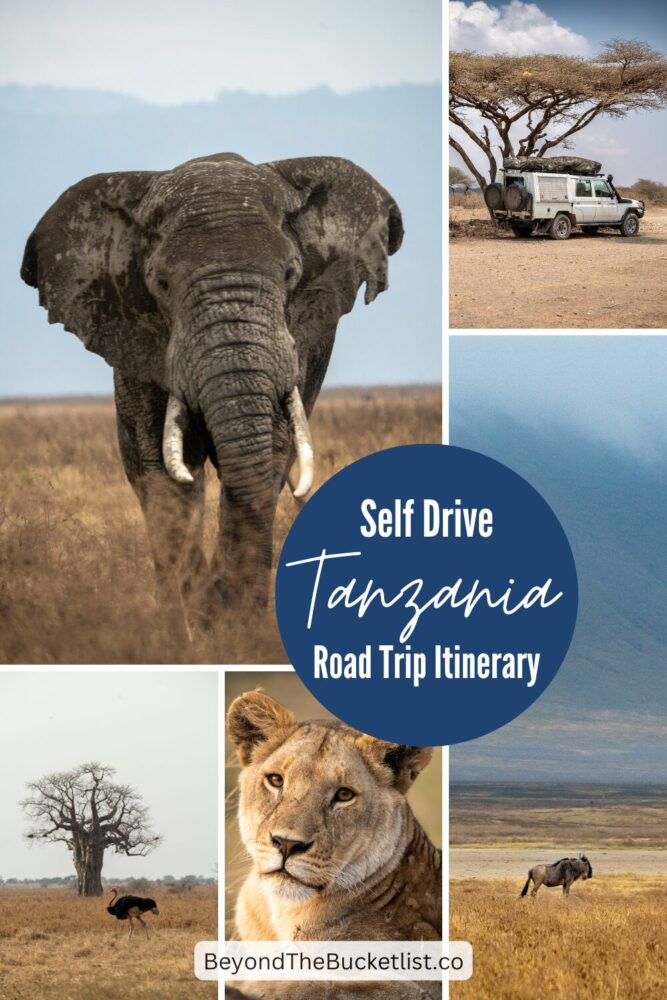
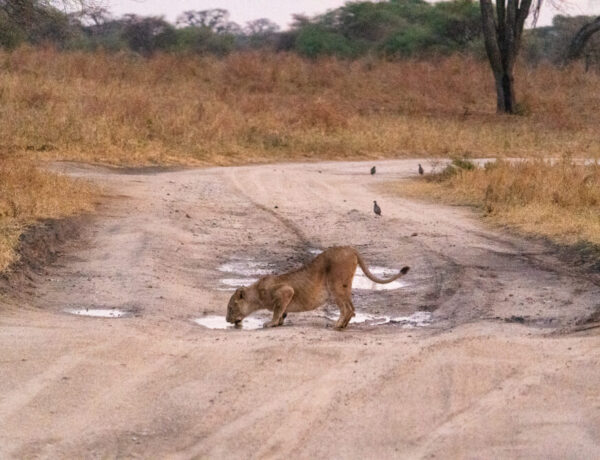
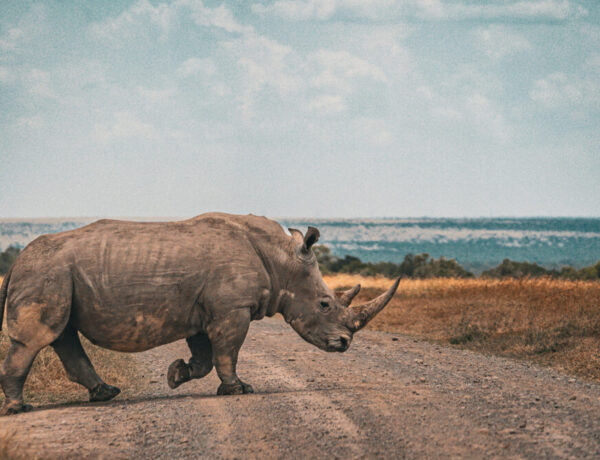
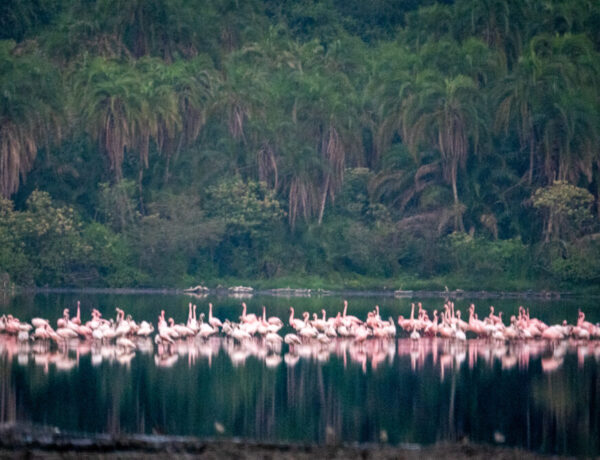
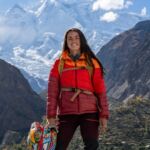

No Comments